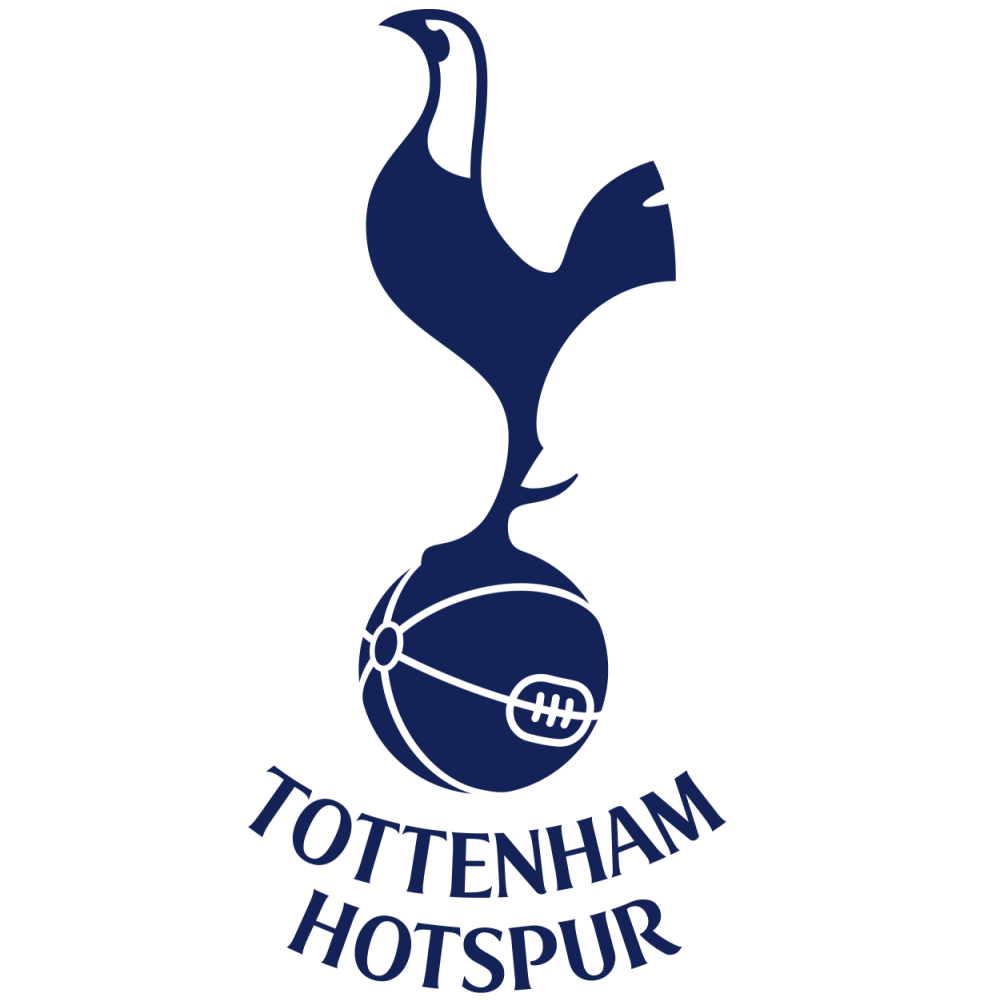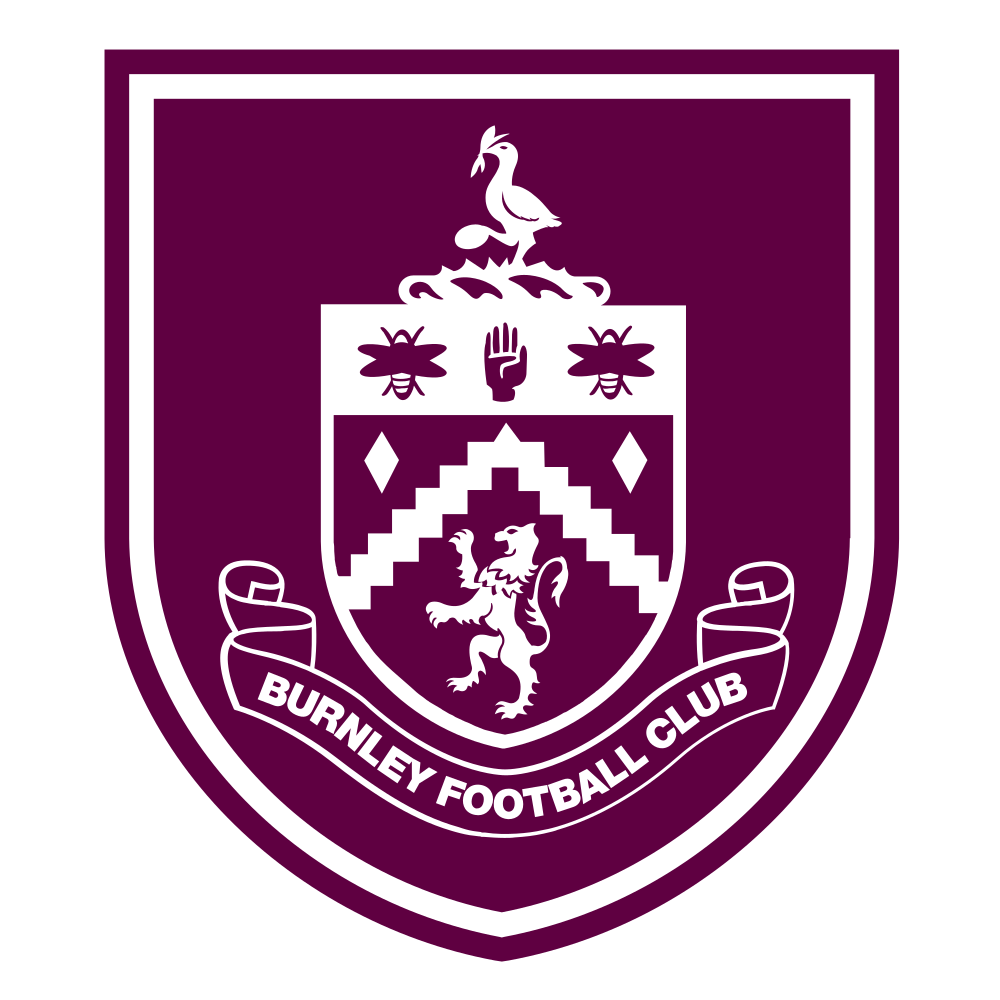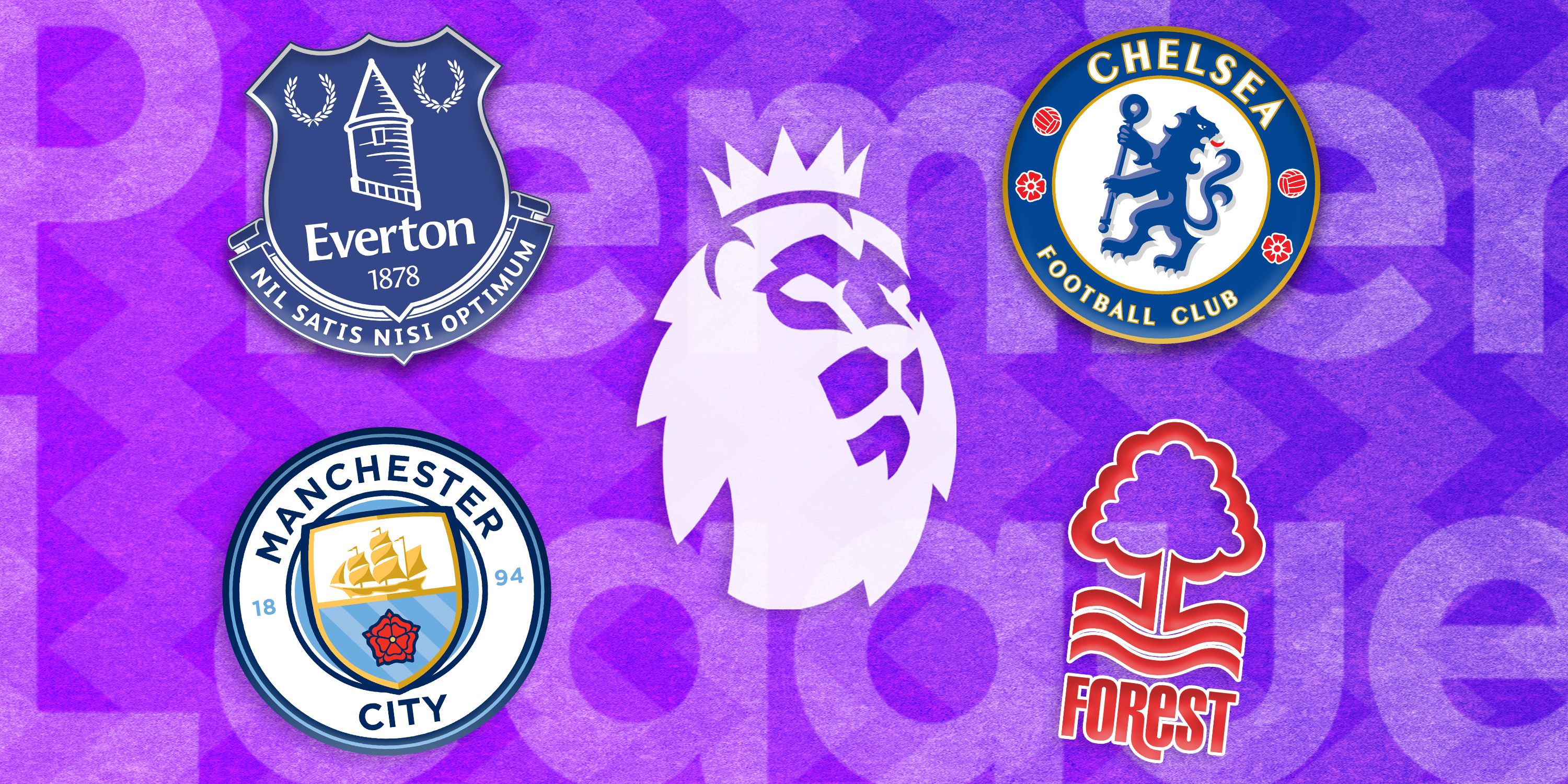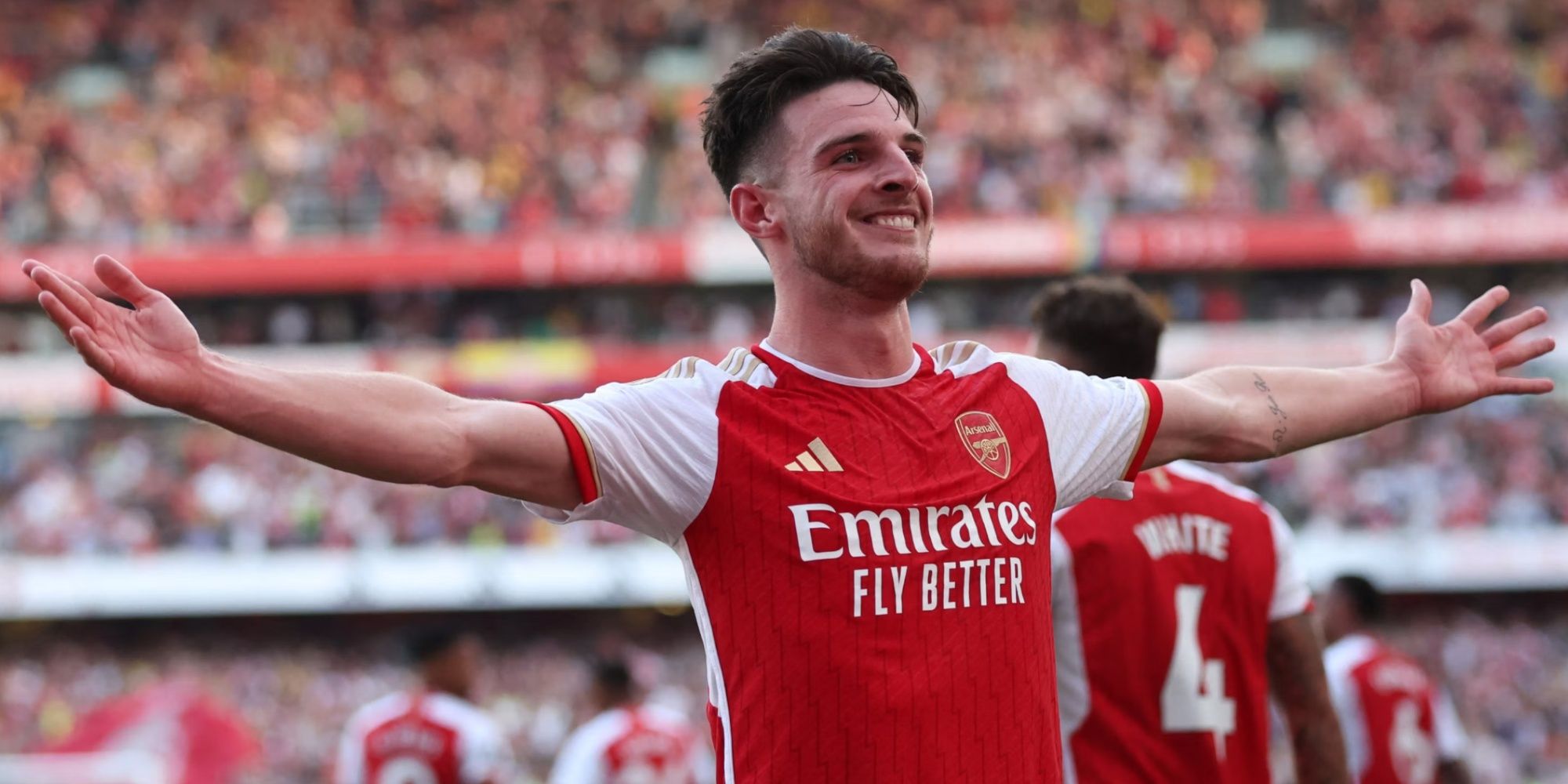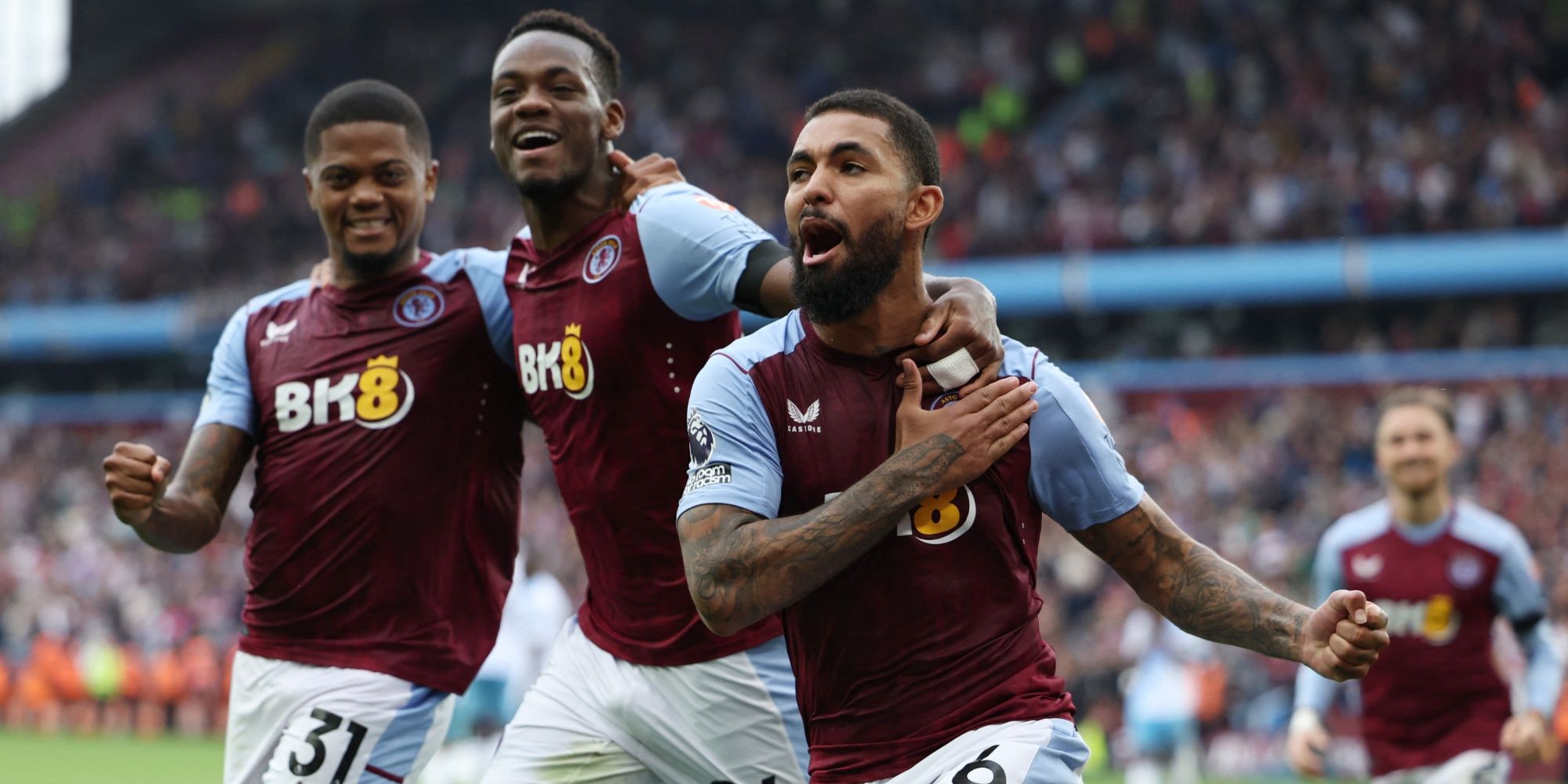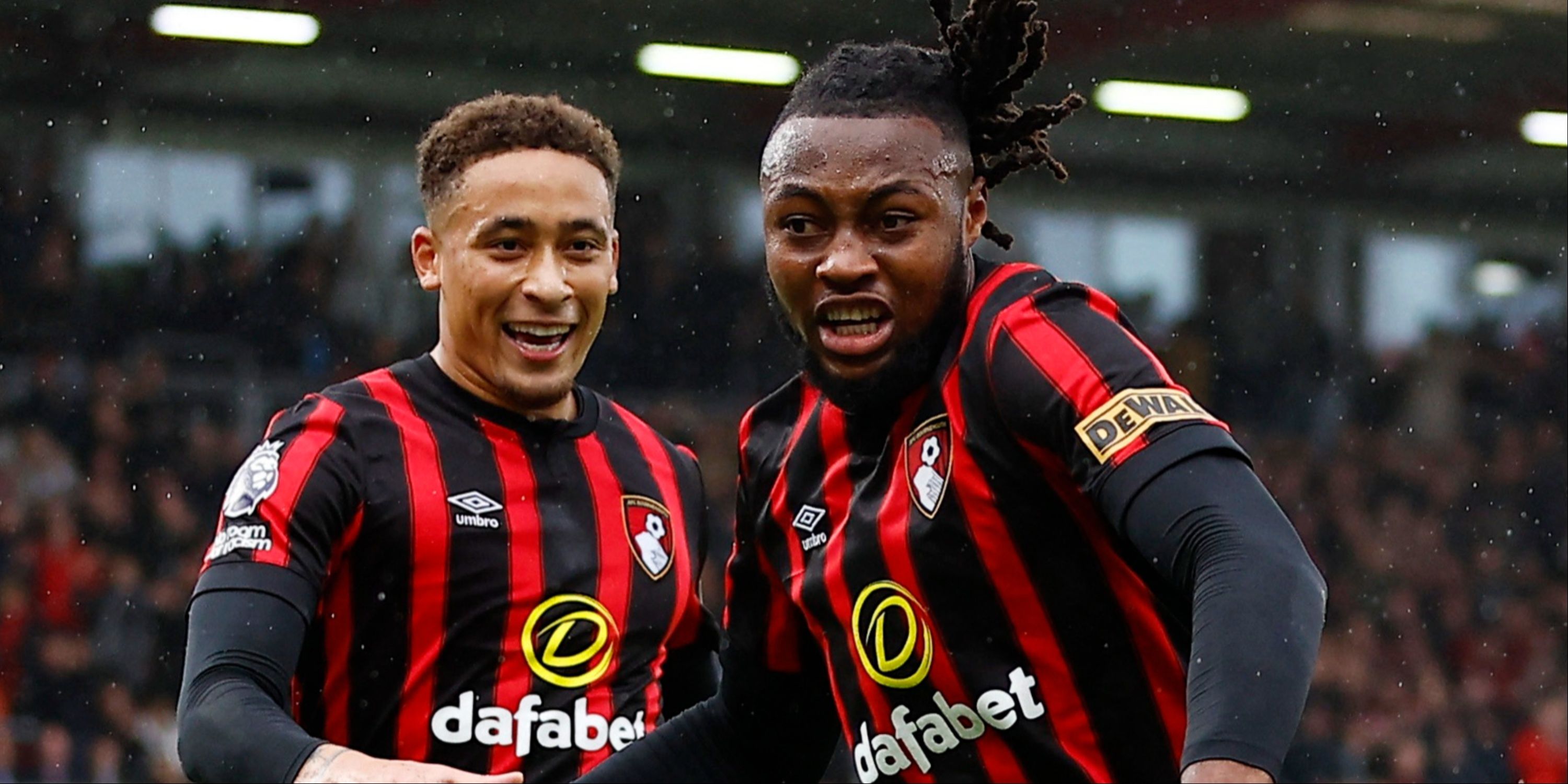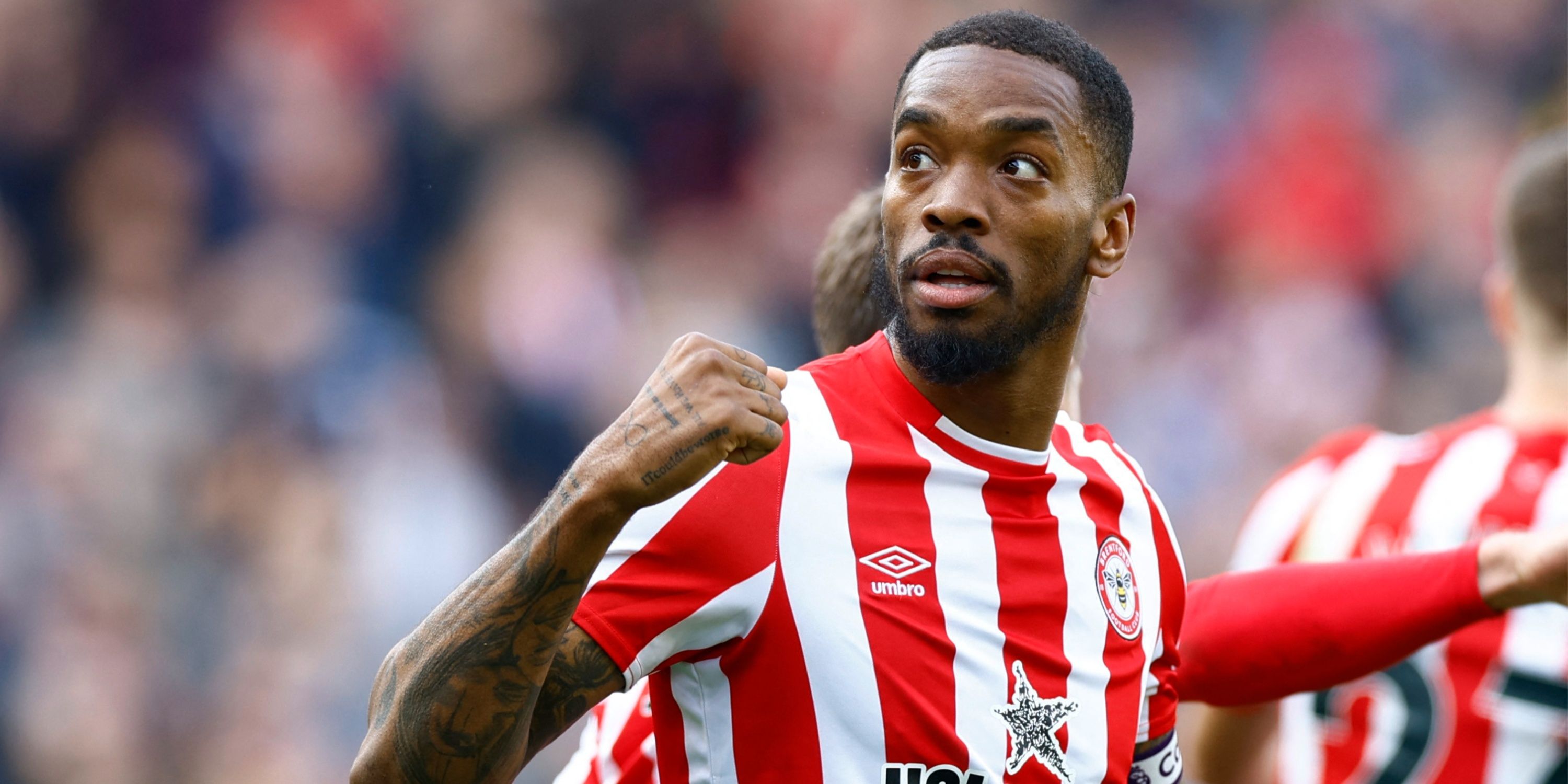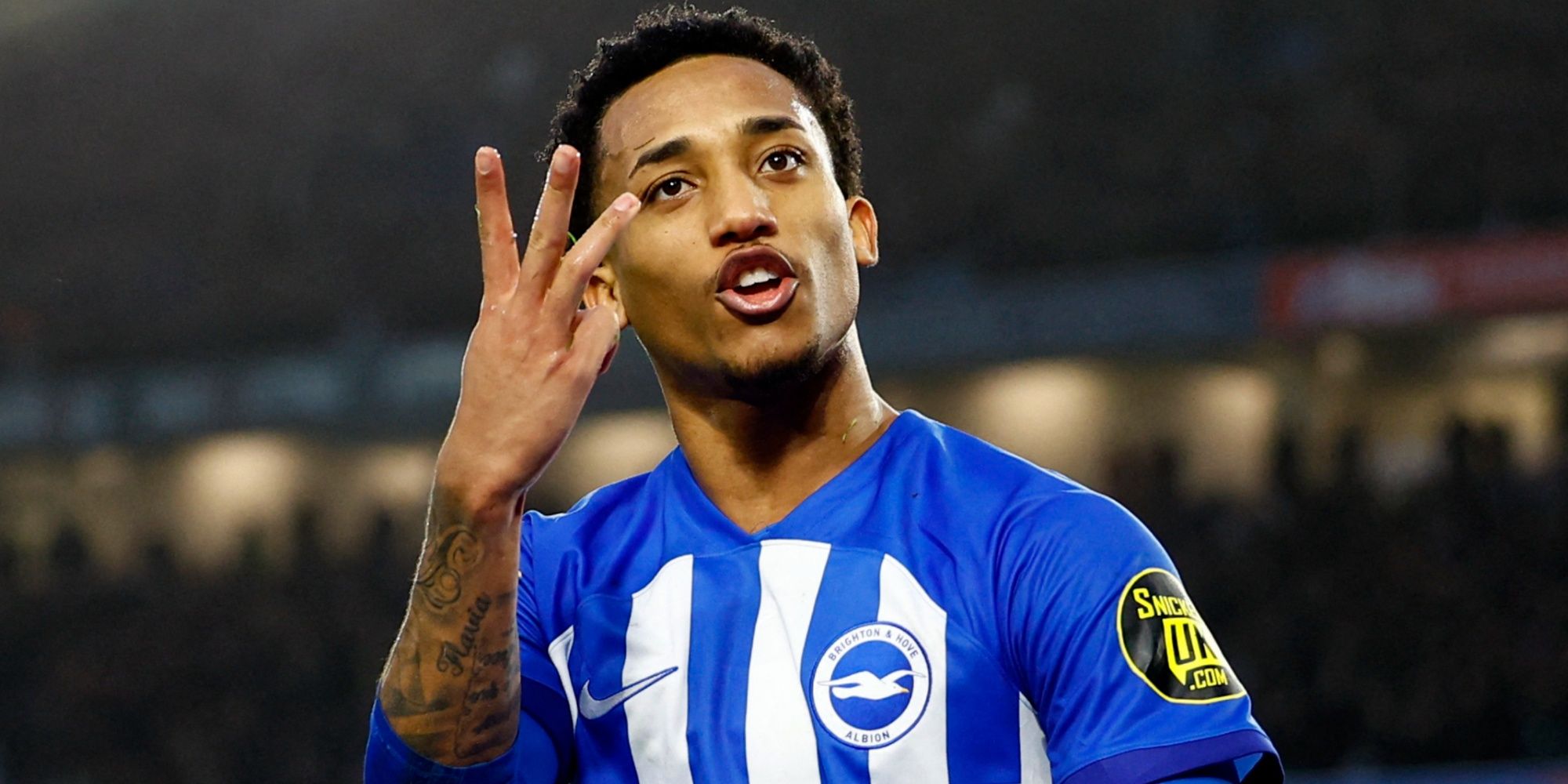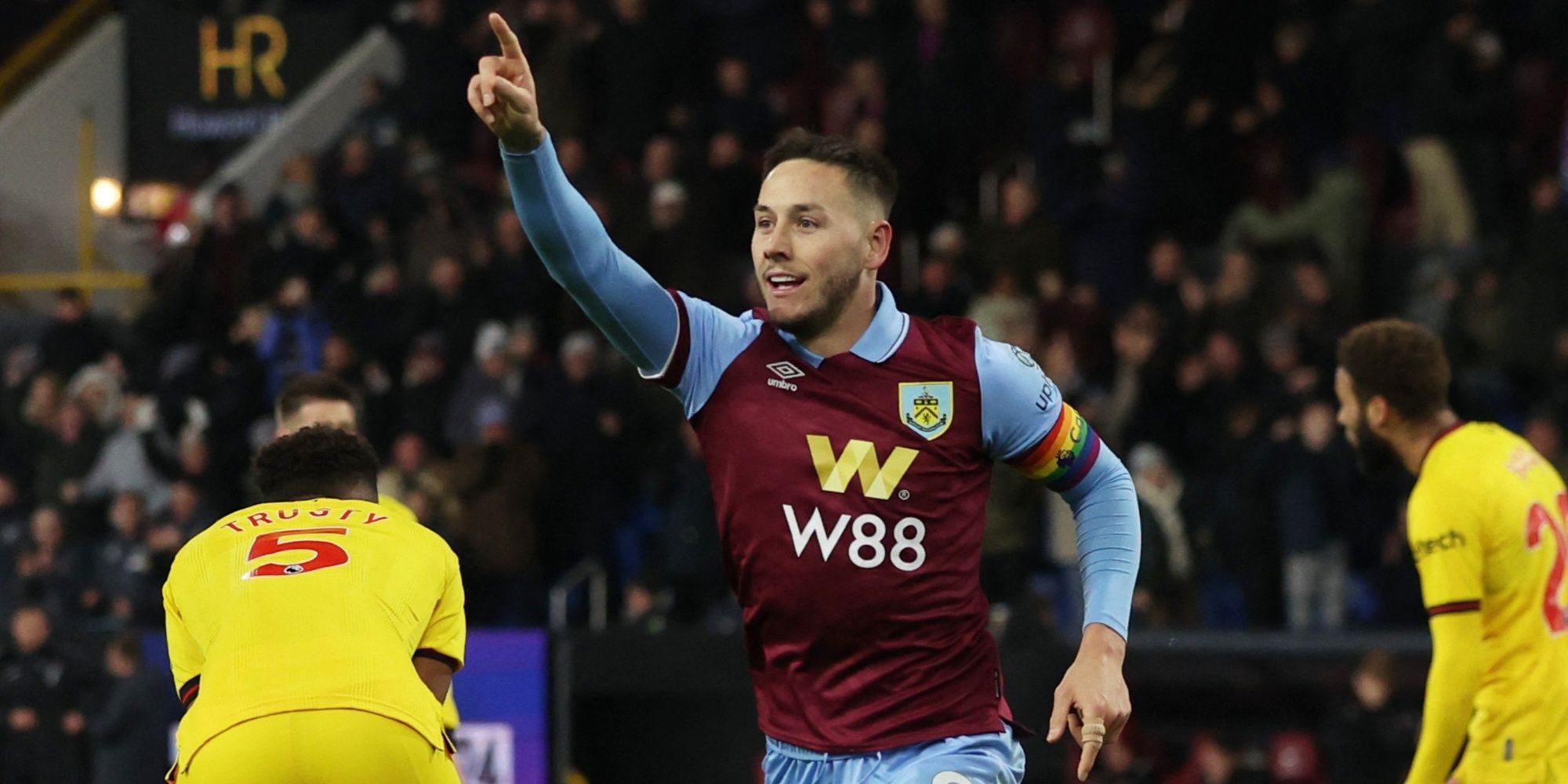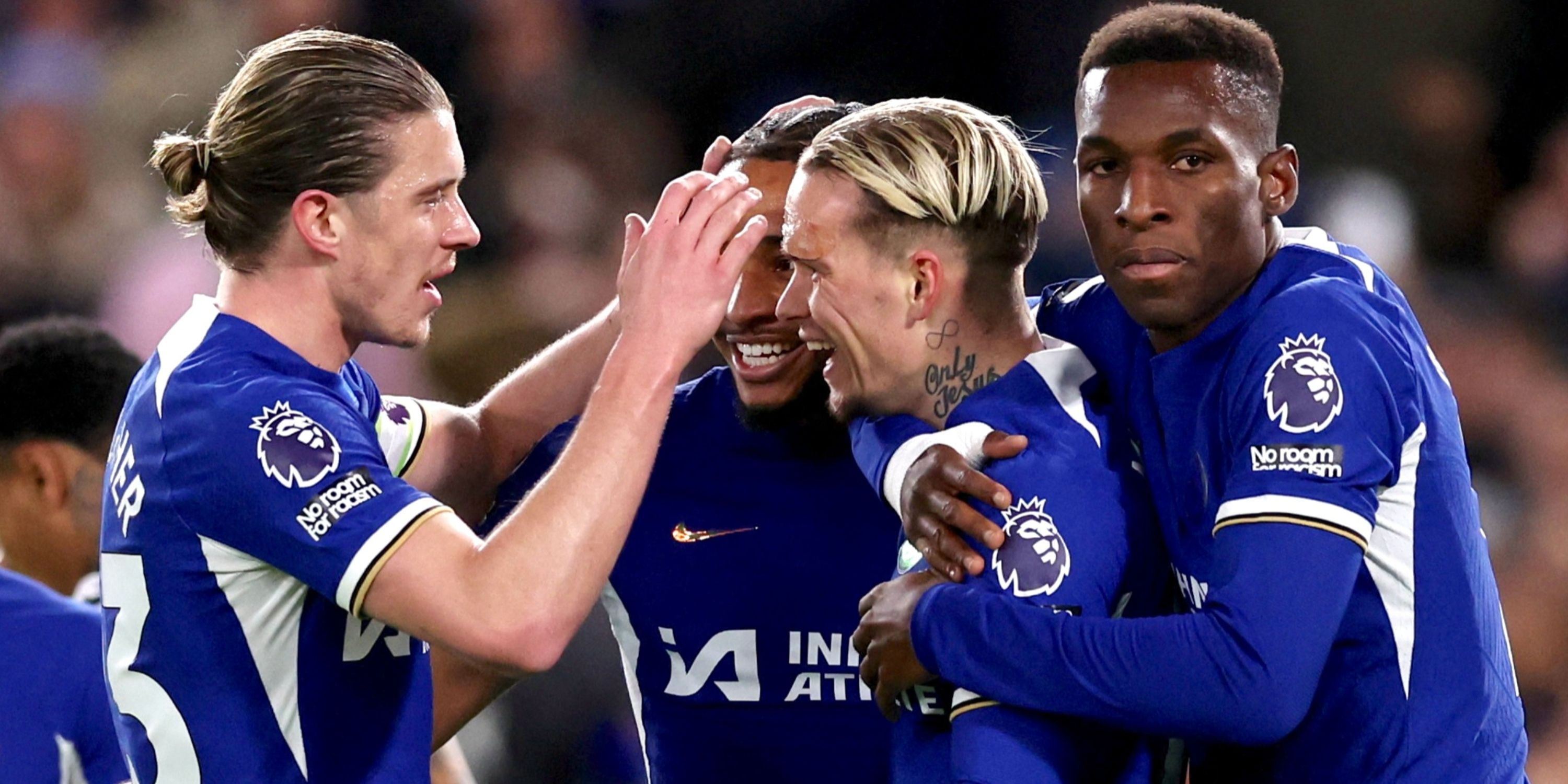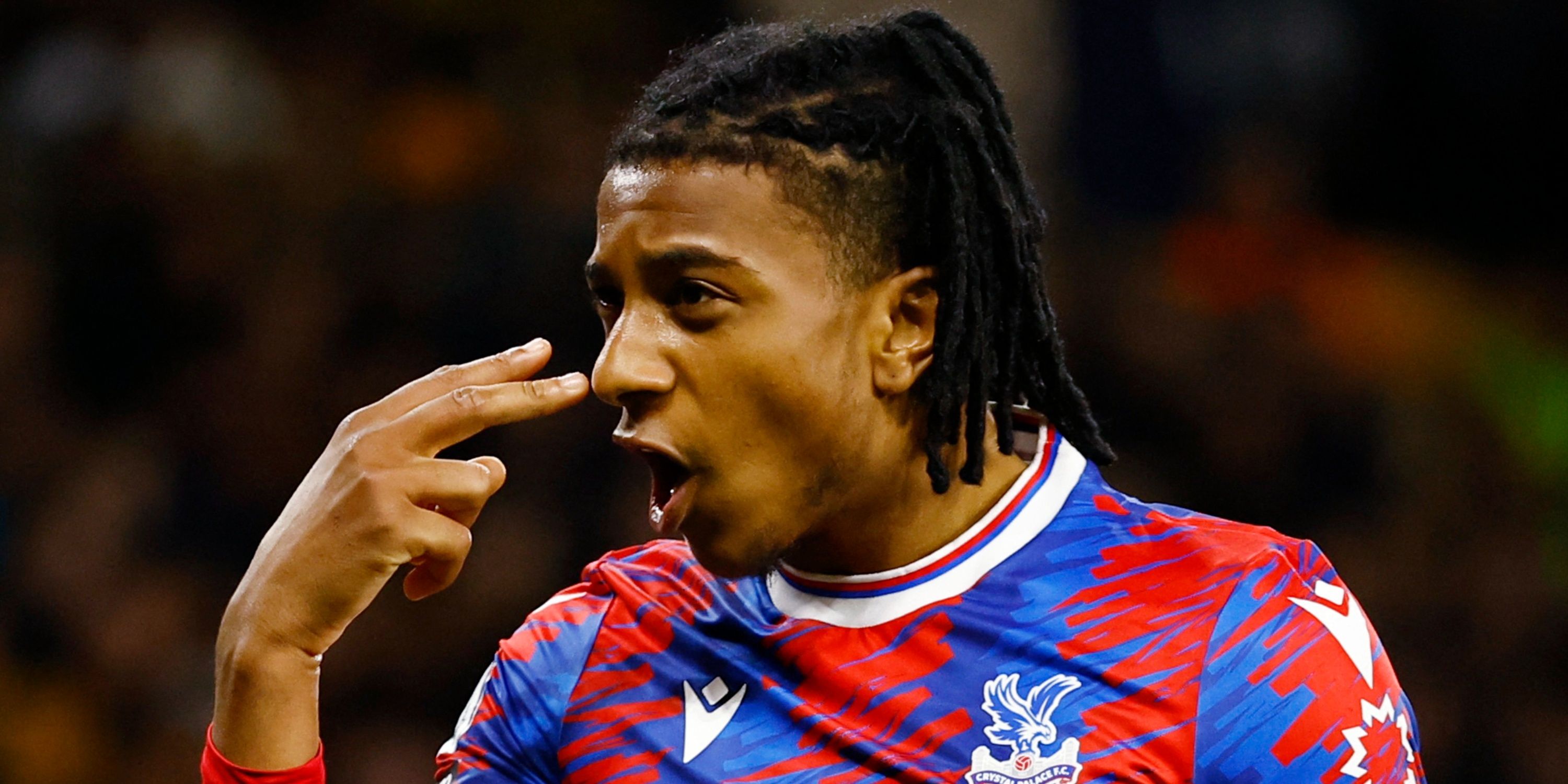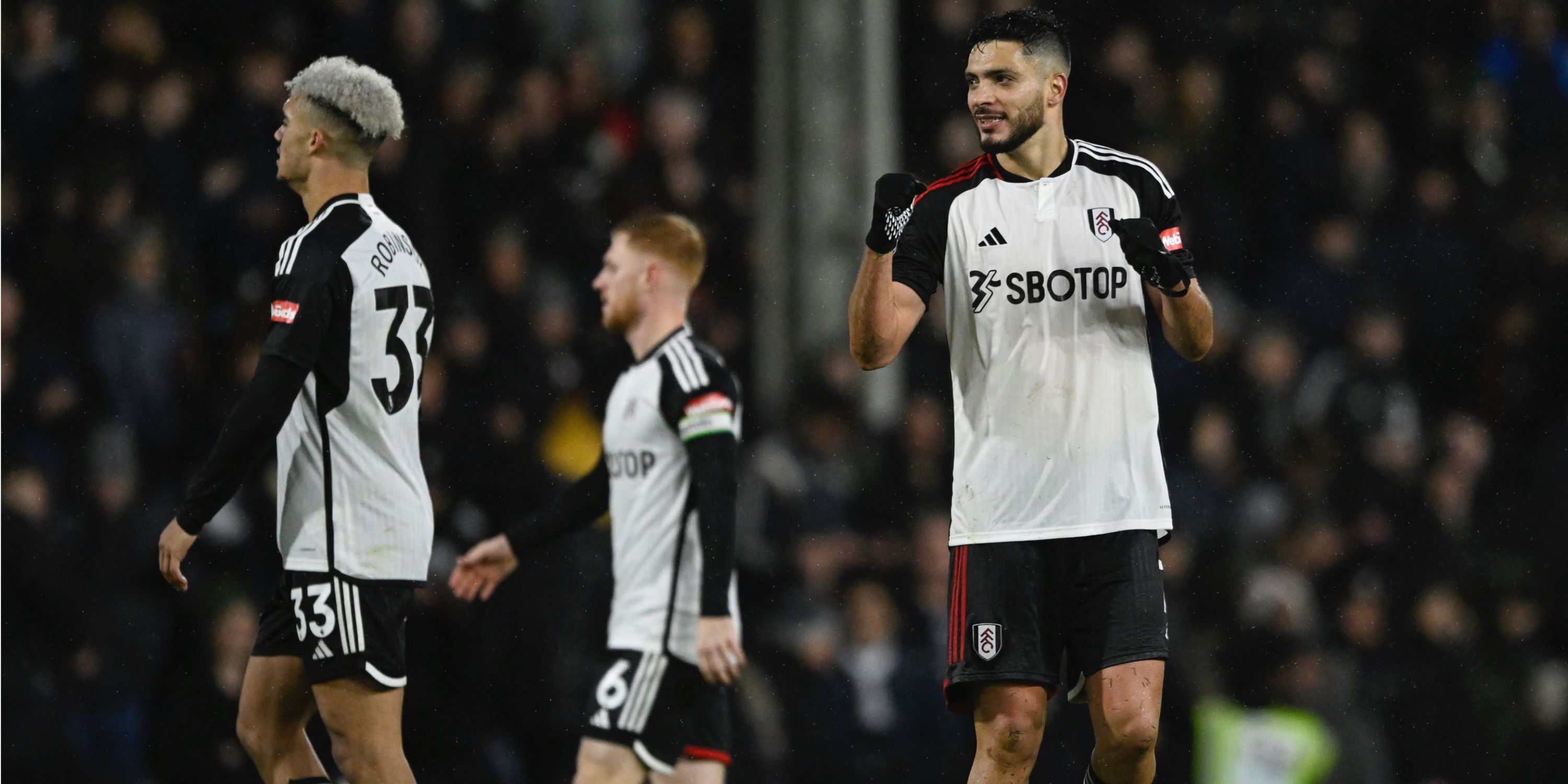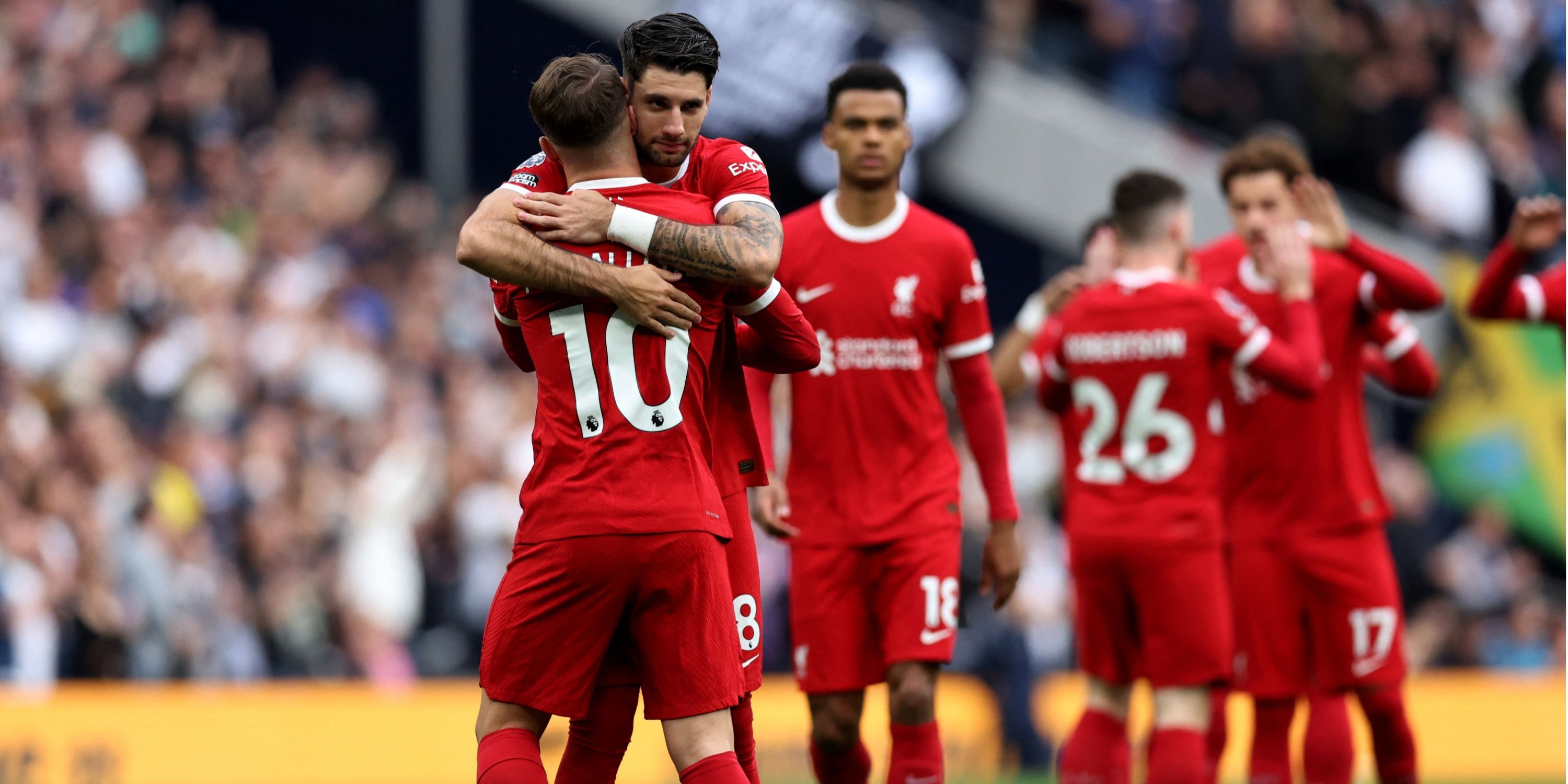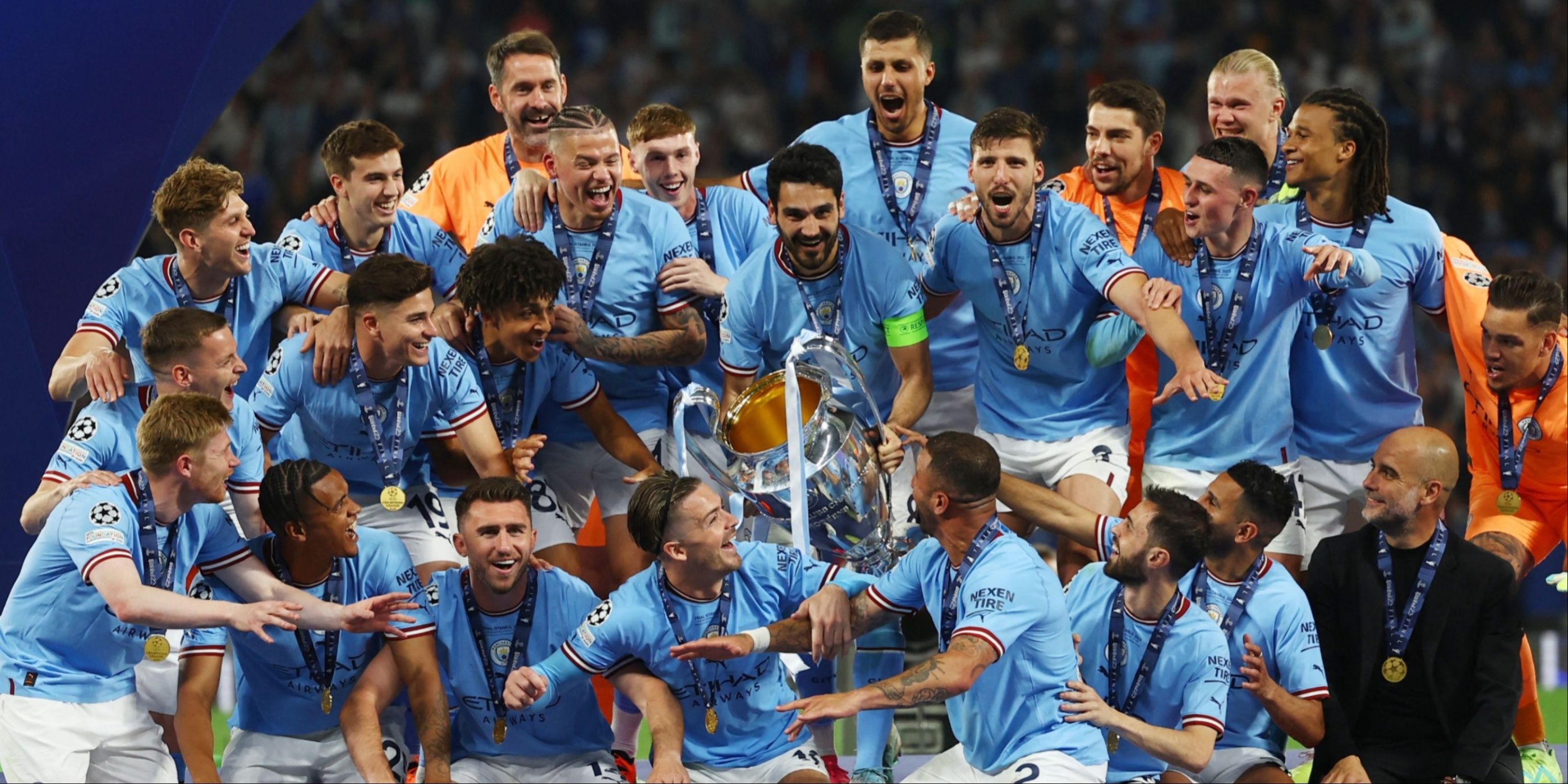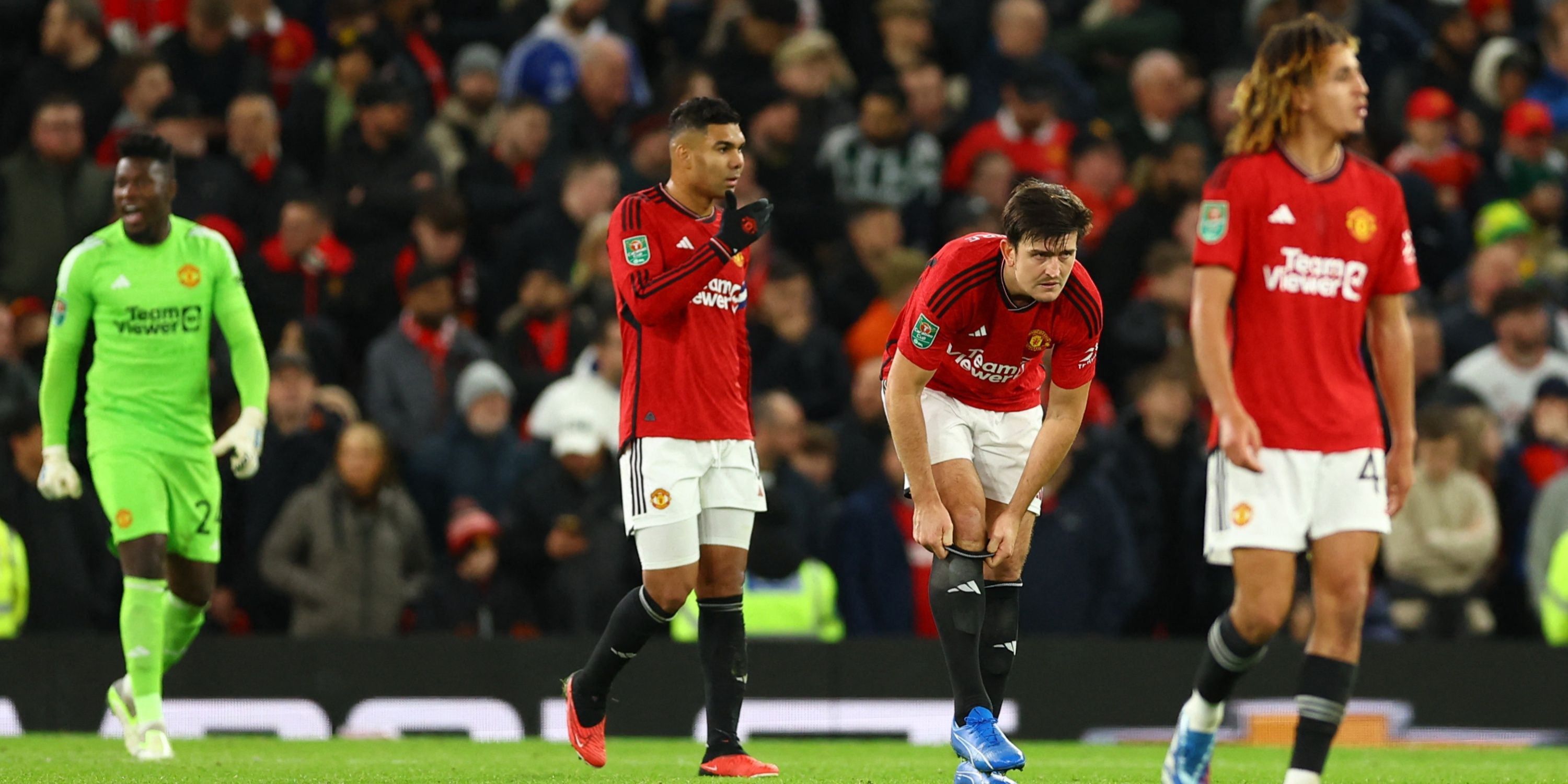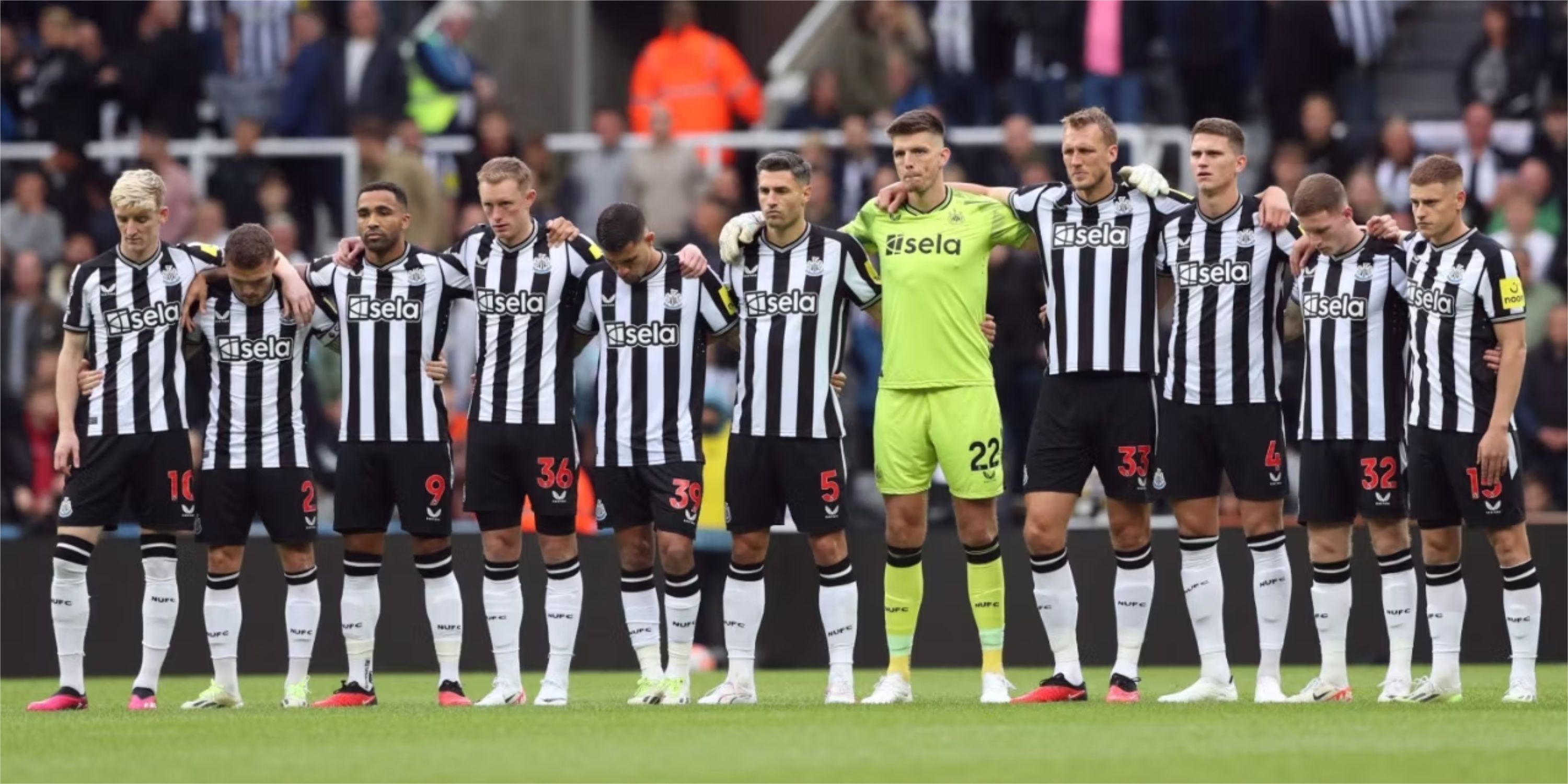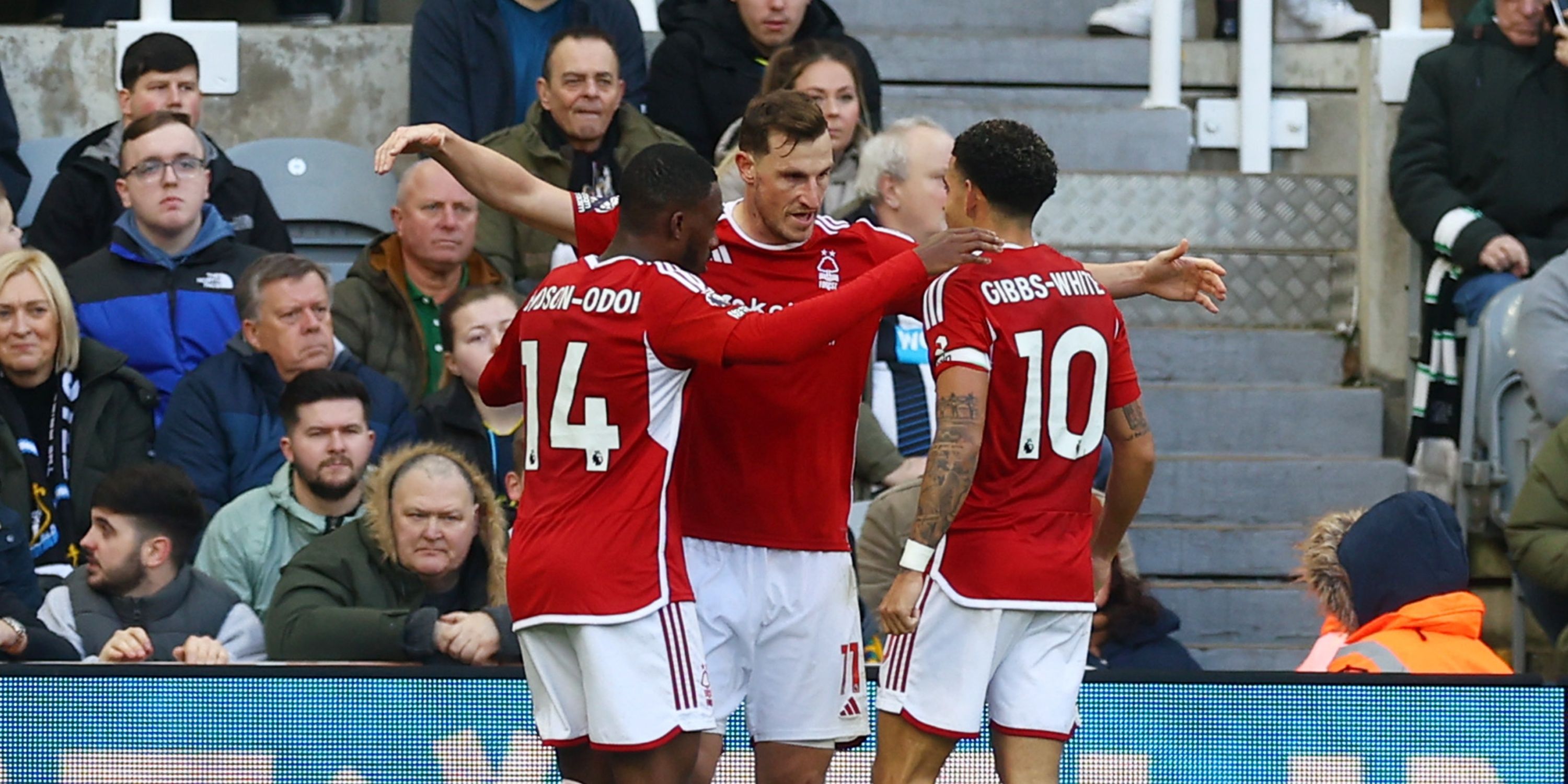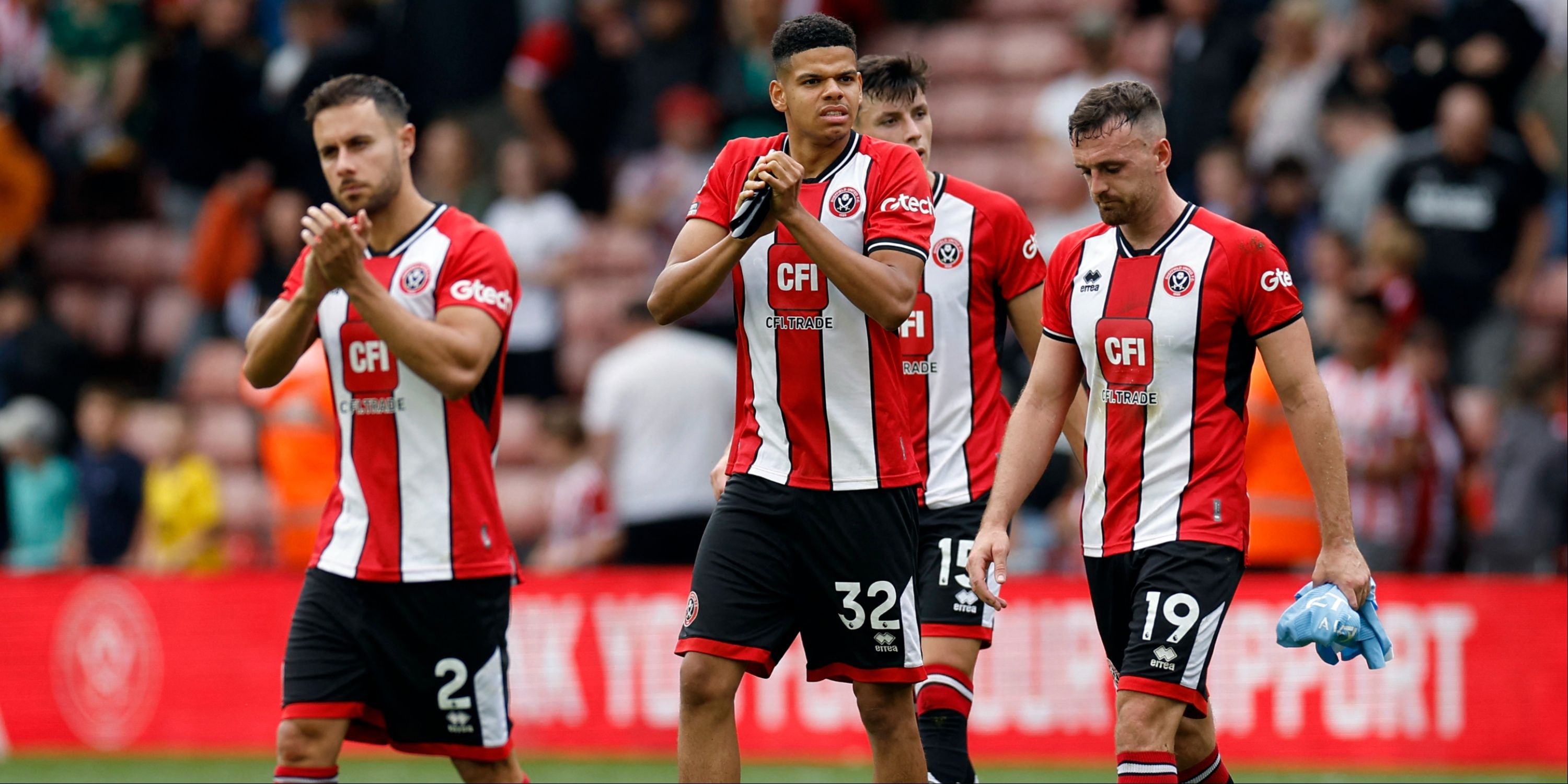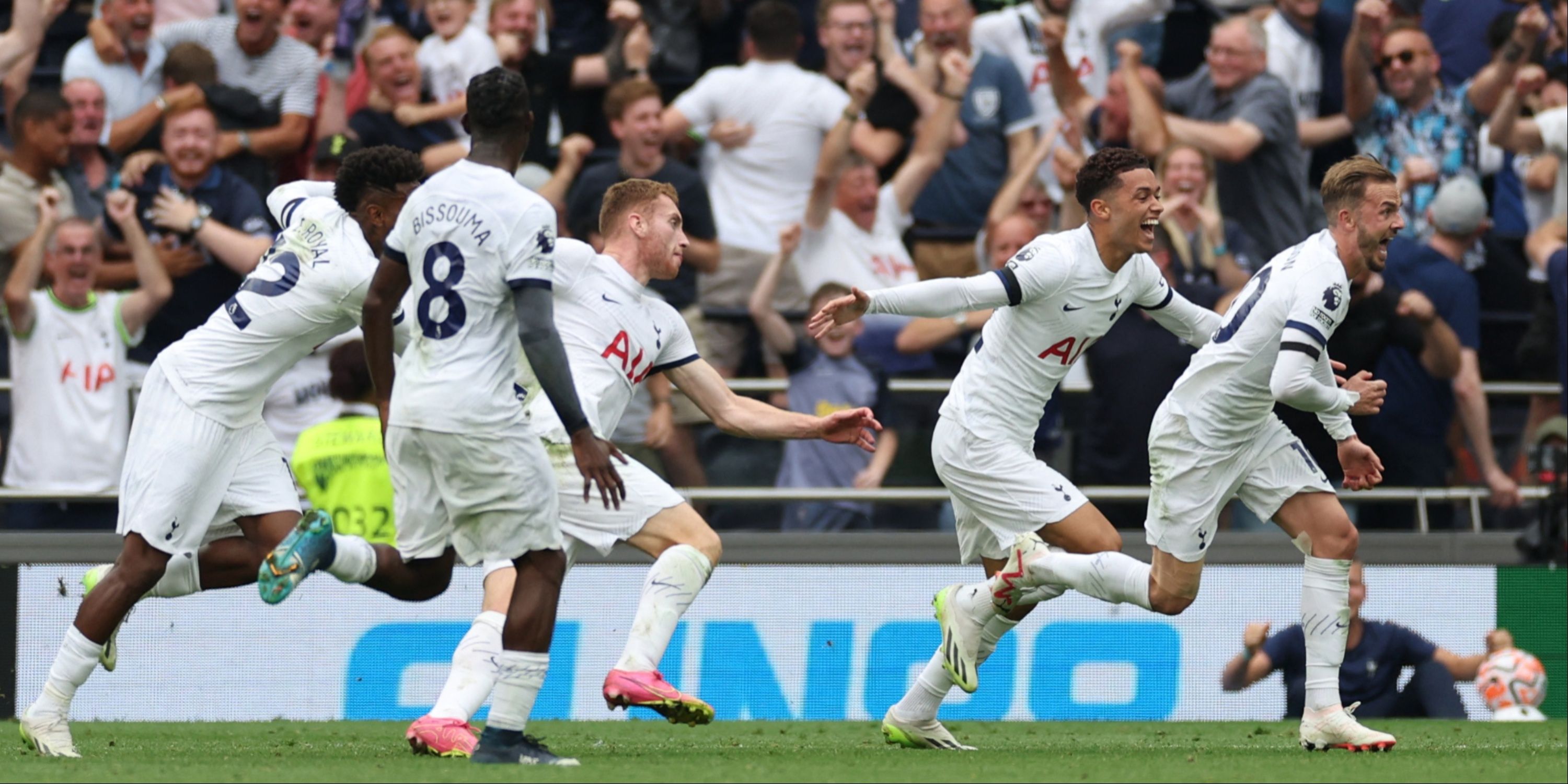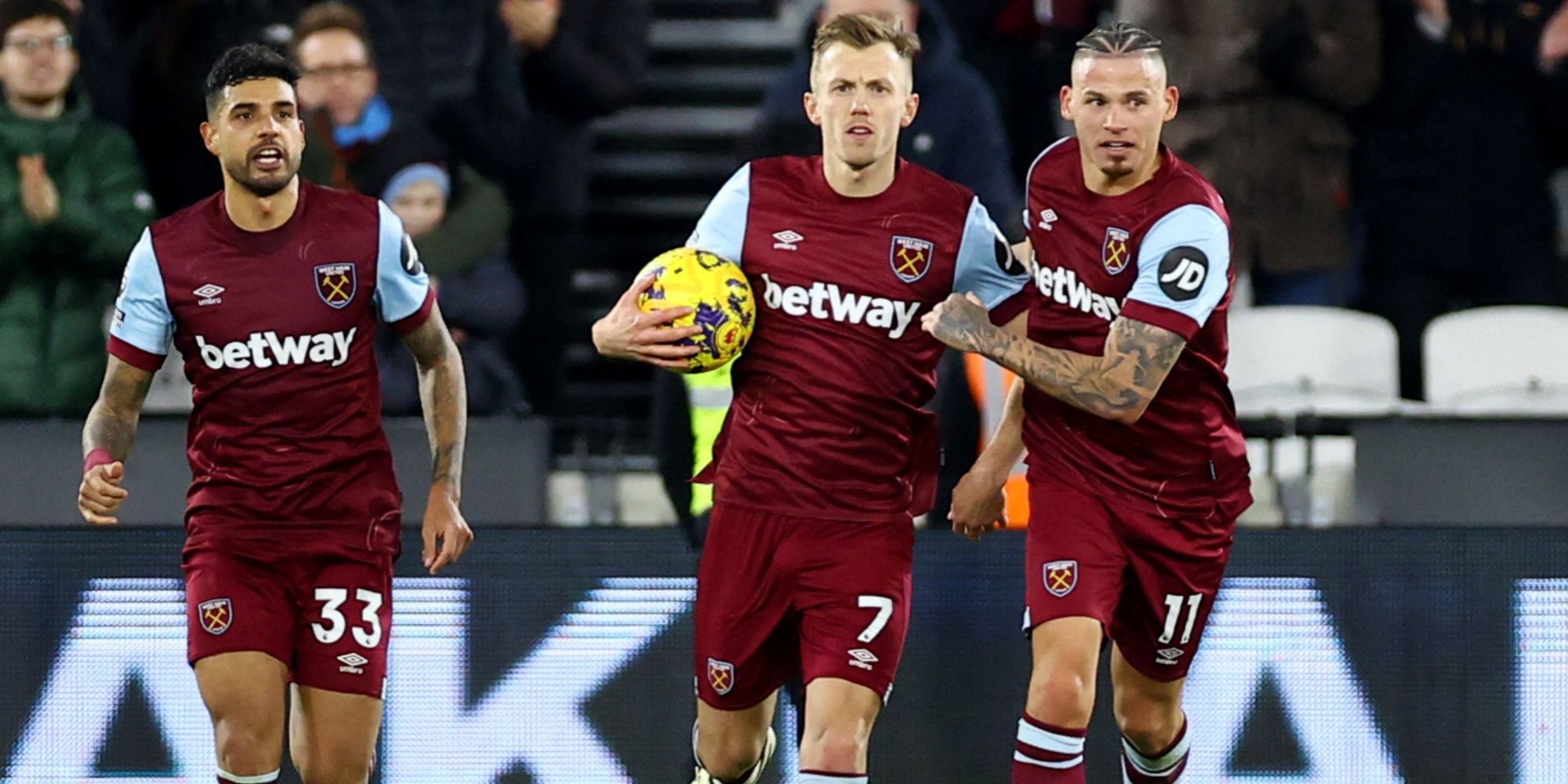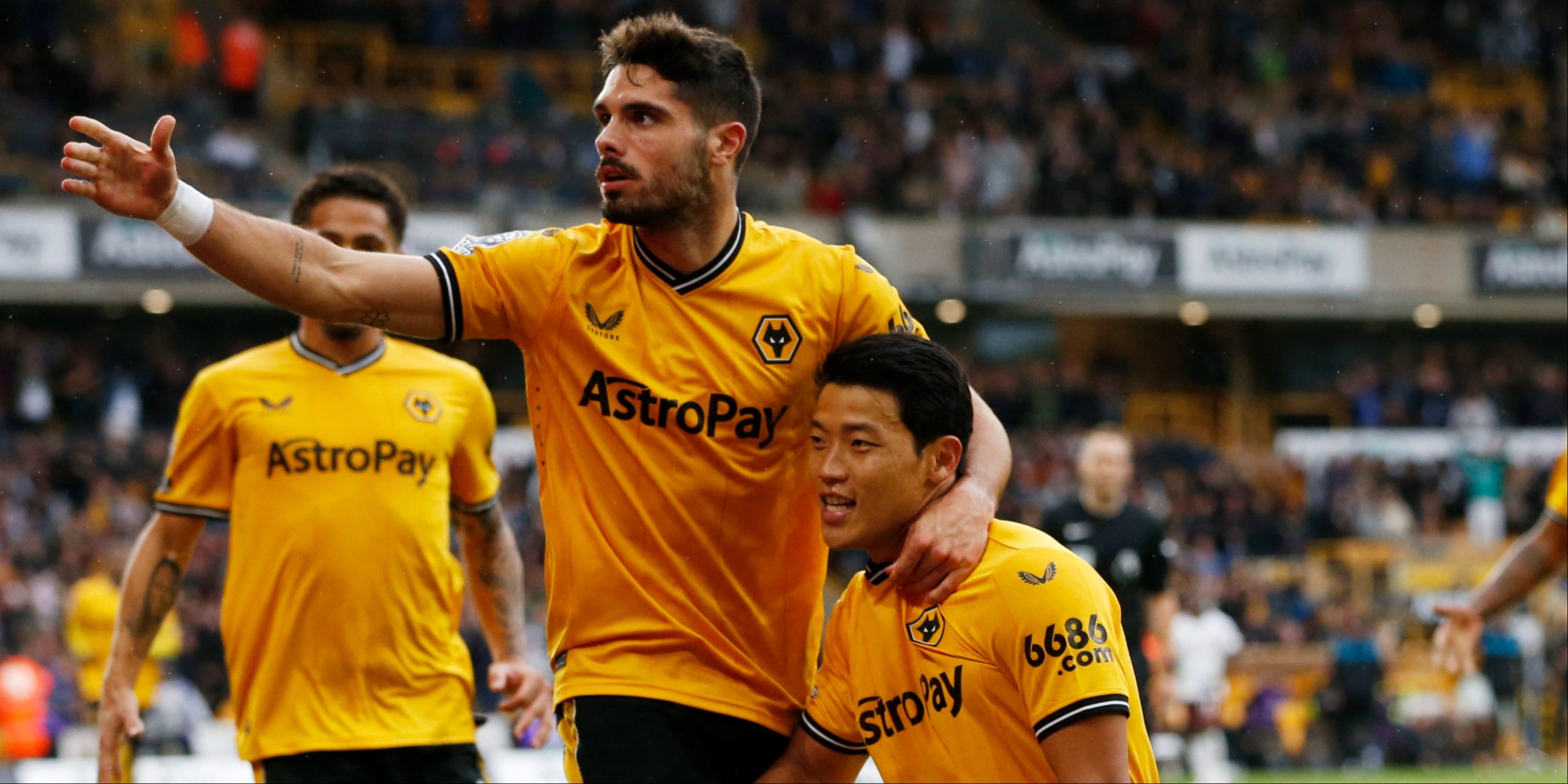Highlights
- Amid all the growing scrutiny on clubs' spending, the Premier League's Profit and Sustainability Rules have been designed to keep some form of control.
- The likes of Manchester City and Chelsea are among the clubs to be sailing dangerously close to the line, with Nottingham Forest having joined Everton in suffering a points deduction.
- Several Premier League clubs will be needing to use the summer transfer window in 2024 to keep their finances in check.
Financial Fair Play, or FFP, has been a term used in football for some time now and, on occasion, has led to some confusion about what it means or entails. PSR or profit and sustainability rules are essentially the same thing, but just has a shiny new name.

Full list of FFP charges against Manchester City
Manchester City have been hit with 115 charges of Financial Fair Play breaches. Here is a full breakdown and a timeline of events.The Premier League and UEFA have stopped using the term FFP, and both now follow the PSR moniker instead. Everton were docked 10 points by the Premier League in November 2023 for breaching their financial regulations (later reduced to six), while in March 2024, Nottingham Forest were stripped of four points for their own breaches. Manchester City have also been under investigation by the Premier League since February 2023 following 115 alleged breaches of financial regulations spanning a decade. To help understand PSR without unwanted confusion, it can be broken down into these key points:
- Premier League clubs can make allowable losses of up to £5 million per season, averaged over three seasons.
- Clubs can increase the £5 million figure to £35 million per year with owner investment, averaging over three seasons.
- Clubs can spread out transfer costs over a maximum of 5 years.
- Although the columns in the table further below may suggest the majority of teams are in breach of PSR, the totals include infrastructure, and any costs for the women and academy sides, which do not count towards PSR.
- Important to note that PSR restraints came into force during the 2023/24 campaign, while previous seasons were under different rulings using the FFP regulations.
|
Premier League Clubs' Profit & (loss) for the financial years 2020, 2021 & 2022 combined |
|
|---|---|
|
Team |
Profit/Loss (£m) |
|
Arsenal |
-194 |
|
Aston Villa |
-281 |
|
Bournemouth |
-139 |
|
Brentford |
-35 |
|
Brighton & Hove Albion |
-125 |
|
Burnley |
-24 |
|
Chelsea |
-552 |
|
Crystal Palace |
-111 |
|
Everton |
-381 |
|
Fulham |
-208 |
|
Liverpool |
-53 |
|
Luton Town |
-18 |
|
Manchester City |
-153 |
|
Manchester United |
-114 |
|
Newcastle United |
-97 |
|
Nottingham Forest |
-113 |
|
Sheffield United |
-27 |
|
Tottenham Hotspur |
+5 |
|
West Ham United |
-78 |
|
Wolverhampton Wanderers |
-23 |
|
As of 18/03/24, only some clubs have released their financial information for the 2022/2023 season |
|
PSR Defined
Put simply, when each Premier League team goes through their annual accounts, they have an allowable loss of no greater than £105 million across the previous three seasons. Unfortunately, it isn't as straightforward as that. Underneath the allowed £105 million loss are a lot of sub-clauses, and this is where a lot of confusion surrounds PSR among many different figures in the game. Under PSR, not all losses are the same. For instance, a club can only lose £15 million of their own money over those three years. This means no more than £15 million extra on any outgoings such as wages, transfer fees, and paying off former managers compared to their income, including TV payments and selling players.
Anything above or up to the £105 million mark must be guaranteed by the clubs' owners buying up shares, known as 'secured funding.' In these circumstances, clubs must submit plans to the Premier League explaining their financial plans for the next two seasons. For clubs that have spent any of the last three seasons outside the Premier League, owners can only put in £8 million of secure funding for those years. This leaves an overall maximum annual loss of £13 million for the seasons in question.
When a club buys a player, they treat the individual as an asset through a term called amortisation. This means that clubs do not have to suffer one big financial outlay, and can instead spread the cost of the player over several years. For example, if a club signs a player for £40 million on a four-year contract, the player is worth £40 million at the start and £0 in the club accounts, and that can be seen as a £10 million loss each year. Chelsea took advantage of this in previous years by signing players on long deals, some as long as eight-year contracts. The Premier League voted in December 2023 that transfer fees could be spread over a maximum of five years.
Some costs do not count towards PSR, such as infrastructure, the cost of running the academy and women's teams. The Premier League also granted the clubs some leeway for any unexpected drop in income caused by COVID-19. Losses that occurred in the 2019/20 and 2020/21 seasons were averaged, with clubs being allowed to exclude any drop in income directly attributed to COVID-19. That will drop out of the three-year accounting period for the 2023/24 season.
Arsenal
Arsenal's need for a striker was widely speculated ahead of the 2024 January transfer window, and it was difficult to argue when looking at Gabriel Jesus' stats, for example, do not scream being a prolific striker. In the 22/23 season, Jesus scored 11 goals and the pressure fell on Bukayo Saka, and Gabriel Martinelli to consistently find the back of the net, and while their respective outputs are impressive, they are not strikers. Mikel Arteta's reluctance to start Eddie Nketiah has put further pressure on Arsenal's wide men.
Like most of the Premier League, the Gunners had a quiet January transfer window in 2024. This was due to Arsenal's heavy spending in the calendar year of 2023. Arsenal spent over £250 million on the likes of Declan Rice (£105 million), Leandro Trossard (£20.5 million), Kai Havertz (£65 million), Jakub Kiwior (£21.5 million) and Jurrien Timber (£34.2 million). The heavy spending to boost Arsenal's title charge meant they could not do any business in January 2024 without a substantial outgoing as they were close to breaching PSR. The only outgoings from Arsenal were limited in terms of bringing in a transfer fee to help stave off PSR, with Miguel Azeez moving to Atletico Baleares, and Lino Sousa to Aston Villa - both for an undisclosed fee and the only transfers out of the club to bring in any money.
The tighter constraints the Premier League set, coupled with Arsenal's heavy spending in 2023 left the Gunners handcuffed in many ways, and the club will have to wait for the summer of 2024 to dip in the transfer market for a striker. But Arsenal will have to trade to comply with PSR, and selling someone like Nketiah will provide them with pure profit as the forward is an academy product. Like every Premier League club, Arsenal must be more creative in the transfer market to improve their squad.
|
Arsenal's Financial Outlook |
|
|---|---|
|
Profit/Loss Financial Years 2020, 2021 & 2022 Combined |
-£194 million |
|
Profit/Loss for 2022/2023 |
-£52.1million |
|
Money From Incoming Transfers Since January 2022 |
£381.8 million |
|
Money From Outgoing Transfers Since January 2022 |
£93.8 million |
|
Sourced From Arsenal |
|
Aston Villa
Aston Villa reinvested the money they received from selling Jack Grealish to Manchester City in 2021 for £100 million wisely. It gave the club a lot of wiggle room when it came to PSR, with Grealish having come through the ranks at Villa Park, and so resulted in pure profit for the club. While Unai Emery's side spent heavily in 2023 with Alex Moreno (£11.8 million), Jhon Duran (£14.8 million), Moussa Diaby (£50 million), and Pau Torres (£32 million) all arriving at Villa Park, the club also traded intelligently. Danny Ings left the club for a fee of £10.5 million, while Villa also received decent money for Cameron Archer (£18.5 million), Aaron Ramsey (£14 million) and Marvelous Nakamba (£3 million).
The club's ability to trade well meant they were among the few Premier League clubs to dip into the market in the January 2024 window. Villa signed Morgan Rogers from Middlesbrough for £15 million and left Unai Emery pleased with Villa's business. Villa have been one of a select few to adapt well to PSR constraints, with their ability to trade well, being key. Given what they have done in that department, it has left them with more wiggle room than several clubs in the Premier League.
|
Aston Villa's Financial Outlook |
|
|---|---|
|
Profit/Loss Financial Years 2020, 2021 & 2022 Combined |
-£281 million) |
|
Profit/Loss for 2022/2023 |
-£120.3million |
|
Money From Incoming Transfers Since January 2022 |
£204.3 million |
|
Money From Outgoing Transfers Since January 2022 |
£81.4 million |
|
Sourced From Aston Villa |
|
Bournemouth
In December 2022, Bournemouth gained some much-needed financial power when Bill Foley bought the club. This has enabled the south coast side to dip into the transfer market more freely than before. In January 2023, the club invested over £50 million in the squad, with Dango Ouattara (£24 million), Antione Semenyo (£9 million), and Ilya Zabarnyi (£19.9 million) all moving to the Vitality Stadium.
The heavy investment in the squad didn't stop there, with the club also spending big in the summer of 2023. Tyler Adams (£22.9 million), Hamad Traore (£21.8 million), Alex Scott (£25 million), Milos Kerkez (£15.2 million), Justin Kluivert (£9.6 million), Romain Faivre (£12.8 million), and Max Aarons (£12 million) all arrived at the club. Bournemouth's heavy spending and extremely limited transfer fees coming in from outgoing players mean the club are in real danger of breaching PSR. Premier League clubs are now required to trade smartly, and Bournemouth have failed to do this in recent years. That is evident when the club's highest transfer fee they have received in the last three seasons for an outgoing player was for Arnaut Danjuma in August 2021 for £21.3 million.
The Cherries are aware they cannot continue to spend so freely without sanctioning outgoings - a reason arguably why Dominic Solanke has been heavily linked with a move away from the club in the summer of 2023 and January 2024 transfer windows. The striker is arguably one of Bournemouth's most saleable assets, and the club will have to accept they will likely have to sell the striker to balance the books soon.
|
Bournemouth's Financial Outlook |
|
|---|---|
|
Profit/Loss Financial Years 2020, 2021 & 2022 Combined |
-£139 million) |
|
Money From Incoming Transfers Since January 2022 |
£186.9 million |
|
Money From Outgoing Transfers Since January 2022 |
£1.3 million |
|
Sourced From Bournemouth |
|
Brentford
Brentford have invested over £130 million in the playing squad since the 21/22 campaign, but perhaps more crucially, have only received around £12 million in outgoing transfer fees during that time. This saw the club under pressure to sell Ivan Toney, which they resisted in January 2024, mainly due to the financial climate in the Premier League with clubs high on alert concerning PSR breaches.
With Toney expressing his desire to move to a bigger club, Brentford will be fully aware there will be many willing bidders in the summer of 2024. The key for Brentford is to sell well, whether that's creating a bidding war for their prized asset or extracting the highest amount possible from an interested club. In doing so, Brentford will be able to spend more freely in the future, and with the inflated prices in modern-day football, the club will hope to receive upwards of £50 million for the striker, even despite his contract status.
|
Brentford's Financial Outlook |
|
|---|---|
|
Profit/Loss Financial Years 2020, 2021 & 2022 Combined |
-£139 million) |
|
Profit/Loss for 2022/2023 |
+£9.2 million |
|
Money From Incoming Transfers Since January 2022 |
£130 million |
|
Money From Outgoing Transfers Since January 2022 |
£12 million |
|
Sourced From Brentford |
|
Brighton
Arguably one of the best-run clubs in Europe, Brighton's ability to discover talent from across the globe, buy players for relatively small fees, and then develop them into players to be sold for extortionate fees is a model that is perfect for the current financial climate in modern-day football. Since the 21/22 season, Brighton have received over £350 million in transfer fees for outgoing players, with the likes of Alexis Mac Allister (£55 million), Leandro Trossard (£21 million), Marc Cucurella (£62 million) and Moises Caicedo (£115 million) all leaving the club for high fees. While their incoming transfer fees have amounted to £175.4 million over the same period.
Brighton's model is reminiscent of Southampton of old when the south coast club consistently generated hefty transfer fees for their players before replacing them with relatively unknown individuals and developing them into top talents worth more than double the fee paid for them. For the majority of teams in world football, losing star players is daunting, but there's an inevitability that Brighton will replace a player efficiently and continue to grow as a club. Their ability to trade well means Brighton is one of the few clubs least likely to breach PSR.
|
Brighton's Financial Outlook |
|
|---|---|
|
Profit/Loss Financial Years 2020, 2021 & 2022 Combined |
-£125 million) |
|
Money From Incoming Transfers Since January 2022 |
£157.6 million |
|
Money From Outgoing Transfers Since January 2022 |
£305.1 million |
|
Sourced From Brighton |
|
Burnley
Burnley's relegation from the Premier League at the end of the 2021/22 season and subsequent promotion from the Championship in the 2022/23 campaign has led to a lot of ins and outs at the club. Relegation from the Premier League means a club must balance the books and offload their high earners. The likes of Nick Pope (£10.4 million), Dwight McNeil (£20 million), Nathan Collins (£20.5 million), and Maxwell Cornet (£17.5 million) all left Turf Moor ahead of the season in the Championship.
Burnley cruised to the Championship title and did so by spending wisely in the process. The club didn't splash the cash excessively to achieve promotion. Lyle Foster arrived for £9.8 million in January 2023 becoming a key player at the back end of the Championship season, as well as showing his importance in Burnley's return to the Premier League. The club also used the loan system with great effect, signing Taylor Harwood-Bellis on loan from Manchester City and was instrumental in the club's promotion season.
Burnley spent over £90 million ahead of their return to the Premier League during the summer 2023 transfer window. However, the lack of sales during the 2023/24 season, and the lack of commercial revenue compared to the top clubs in the Premier League mean Burnley will have to look at outgoings to stave off any PSR breaches.
|
Burnley's Financial Outlook |
|
|---|---|
|
Profit/Loss Financial Years 2020, 2021 & 2022 Combined |
-£24 million) |
|
Money From Incoming Transfers Since January 2022 |
£142.3 million |
|
Money From Outgoing Transfers Since January 2022 |
£104.1 million |
|
Sourced From Burnley |
|
Chelsea
Since Todd Boehly arrived at Stamford Bridge in 2022, Chelsea have spent over £1 billion. They used amortisation intelligently by tying players down to long contracts before the new rules were put in place in December 2023. However, their heavy spending caught up with them by January 2024, with the club unable to bring any players to the club without selling players. If Chelsea do not sell a player of significance by June 30th 2024 they will breach PSR, and they are already under investigation by the Premier League over FFP breaches during the Roman Abramovich era.
Players such as Raheem Sterling (£47.5 million), Marc Cucurella (£62 million), Moises Caicedo (£115 million), and Wesley Fofana (£72 million), among others, have all arrived at Stamford Bridge for large transfer fees since Boehly's takeover of the club was confirmed. The consistently heavy spending, even with Chelsea's large commercial revenue, is not sustainable, and they are in real trouble of breaching PSR. As Everton and Nottingham Forest have found out, any breaches of PSR will result in serious consequences. Chelsea have managed to offload players such as Kai Havertz (£65 million), Mason Mount (£55 million), and Matteo Kovacic (£30 million), but the club remains in real danger of falling foul of PSR.
|
Chelsea's Financial Outlook |
|
|---|---|
|
Profit/Loss Financial Years 2020, 2021 & 2022 Combined |
-£552 million |
|
Profit/Loss for 2022/2023 |
-£90.1 million |
|
Money From Incoming Transfers Since January 2022 |
£1.1 billion |
|
Money From Outgoing Transfers Since January 2022 |
£302.3 million |
|
Sourced From Chelsea |
|
Crystal Palace
Since the January 2022 transfer window, Palace have invested £90.6 million in the playing squad. They're a very well-run and stable club, one that rarely goes out and spends hefty transfer fees on players. Their most expensive signings during that period have been Cheick Doucoure (£20.3 million), and Adam Wharton (£22 million).
Palace have a settled squad, with the majority being together for some time now. The club is in a healthy position, and while there is a hunger from supporters for more investment in the playing squad, the club will continue to be frugal in the transfer market while gradually improving the team. Palace do not have the financial muscle to go out and spend large amounts of money in each window, and operate in a way that suits the current financial climate in the football world.
|
Crystal Palace's Financial Outlook |
|
|---|---|
|
Profit/Loss Financial Years 2020, 2021 & 2022 Combined |
-£111 million |
|
Money From Incoming Transfers Since January 2022 |
£90.6 million |
|
Money From Outgoing Transfers Since January 2022 |
£5.76 million |
|
Sourced From Crystal Palace |
|
Everton
Everton's finances have been the talk of the Premier League for some time, and they were thrust further into the news when they were deducted 10 points by the Premier League for breaching PSR. The club have invested over £120 million since the January transfer window in 2022, and has managed to bank £127.7 million in player sales during that time, including Richarlison (£52.2 million), and Anthony Gordon (£40 million).
The Premier League handed Everton a 10-point deduction in November 2023 for breaching PSR for three seasons ending with 2021-22. During that period the maximum losses allowed was £105 million, and this includes adjustments based on the impact of COVID, youth development and other costs. The Premier League maintains Everton's losses amounted to £124.5 million, while the club contend they accounted for certain payments differently. The club appealed the punishment, and ended up seeing their points deduction reduced to six - a significant development given how tight the relegation battle is and Nottingham Forest's own recent deduction.
|
Everton's Financial Outlook |
|
|---|---|
|
Profit/Loss Financial Years 2020, 2021 & 2022 Combined |
-£381 million |
|
Money From Incoming Transfers Since January 2022 |
£122 million |
|
Money From Outgoing Transfers Since January 2022 |
£127.7 million |
|
Sourced From Everton |
|
Fulham
Fulham are finally becoming a stable side in the Premier League once again. After a period of changing divisions between the Premier League and Championship in five successive seasons, Fulham have remained in the Premier League since 2022 after winning the Championship title in the 2021/22 season. The relegations and subsequent promotions led to several changes to the playing squad in a bid to get high earners off their books for the Championship campaign, Fulham then had to prepare for the Premier League once promoted, which saw an influx of players suited to England's top flight.
Since the January transfer window of 2022, Fulham have invested £122 million in the playing squad and the key for Fulham is to maintain their Premier League status and gradually improve the side each season. The club have received £66.1 million in transfer fees for outgoing players, most of the money coming from the sale of Aleksandar Mitrovic to Al-Hilal for £45.4 million in the 2023 summer window. Fulham's need for a striker was evident during the 2023/24 campaign, but with clubs cautious in the transfer window of January 2024, the club had to bide their time before eventually signing Armando Broja on loan from Chelsea on deadline day.
With Fulham's commercial revenue not as substantial as the Premier League's top clubs, they do not have the financial muscle to spend heavily. The lack of significant outgoings over the last few seasons has also had an impact on the clubs' ability to dip into the transfer window in January 2024. Despite the squad changing considerably upon relegation and promotion, the club failed to receive notable transfer fees outside of Mitrovic and Andre-Frank Zambo Anguissa, who left for Napoli for £13.5 million in the summer of 2022.
|
Fulham's Financial Outlook |
|
|---|---|
|
Profit/Loss Financial Years 2020, 2021 & 2022 Combined |
-£208 million |
|
Money From Incoming Transfers Since January 2022 |
£122 million |
|
Money From Outgoing Transfers Since January 2022 |
£66.1 million |
|
Sourced From Fulham |
|
Liverpool
Liverpool are fortunate enough to have one of the largest commercial revenues in the Premier League at around £250 million per year. Since the summer transfer window of 2022, the club have invested over £300 million in the playing squad. The likes of Luis Diaz (£40.5 million), Darwin Nunez (£67.5 million), Cody Gakpo (£37 million), Alexis Mac Allister (£35 million), and Dominik Szoboszlai (£65 million) have all arrived at Anfield since 2022. The club have traded well in that time, receiving £124.9million in outgoing transfer fees, with Sadio Mane (£35 million) and Fabinho (£40.3 million) contributing to a large chunk of that.
Without the sales of Mane, Fabinho and Neco Williams (£18 million), the club would have been in a precarious position with PSR. However, Jurgen Klopp will leave the club in the summer of 2024 in a relatively healthy position financially, with Liverpool one of the few big clubs in the Premier League not fearful of falling foul of PSR.
|
Liverpool's Financial Outlook |
|
|---|---|
|
Profit/Loss Financial Years 2020, 2021 & 2022 Combined |
-£53 million |
|
Profit/Loss from 2022/2023 |
-£9 million |
|
Money From Incoming Transfers Since January 2022 |
£305 million |
|
Money From Outgoing Transfers Since January 2022 |
£124.9 million |
|
Sourced From Liverpool |
|
Luton Town
Luton have done exceptionally well to reach the Premier League, and it's even more impressive when looking at how little they've spent in the transfer market since January 2022. The club have spent around £25 million on the playing squad in that time. It's a shoestring budget, to say the least, but they've shopped around smartly, bringing in players on free transfers, such as Andros Townsend, Chiedozie Ogbene and Ross Barkley.
The way Luton have operated and have still been competitive in the Premier League can only be admired. Their promotion to the Premier League during the 2022/23 campaign was worth around £250 million to the club, which is a huge financial boost to a club the size of Luton. Due to the club using the transfer market intelligently, they are not in any danger of breaching PSR. The losses of £18 million over three years is one of the lowest in the Premier League. It is only bettered by Spurs, who managed to achieve a £5 million profit for the same period.
|
Luton's Financial Outlook |
|
|---|---|
|
Profit/Loss Financial Years 2020, 2021 & 2022 Combined |
-£18 million |
|
Profit/Loss for 2022/2023 |
-£16.3 million |
|
Money From Incoming Transfers Since January 2022 |
£25 million |
|
Money From Outgoing Transfers Since January 2022 |
£750k |
|
Sourced From Luton |
|
Manchester City
The 115 FFP charges Manchester City faces have been well-documented. The club, if found guilty, will suffer serious consequences and their punishment will undoubtedly be the harshest in Premier League history. Their commercial revenue is one of the largest in world football at an astounding £341.4 million per year. This helps Man City exponentially and means they have the financial muscle to compete with the biggest clubs in the world and arguably have the largest transfer budget of any team in the Premier League.
Since January 2022, Man City have invested over £370 million in the playing squad with the likes of Julian Alvarez (£15.3 million), Erling Haaland (£51.2 million), Matheus Nunes (£53 million), Josko Gvardiol (£77.9 million), and Jeremy Doku (£55.8million) all making the move to the Etihad Stadium. The club have also sold wisely, receiving £313.7 million in outgoing transfer fees during the same period. Without those sales, the club would have been unable to invest as much as they did in the side. Unlike Chelsea, Man City have recouped enough money from selling players to stave off any PSR concerns. However, that is the least of their worries with the trial for 115 FFP charges to be held in 2024.
|
Manchester City's Financial Outlook |
|
|---|---|
|
Profit/Loss Financial Years 2020, 2021 & 2022 Combined |
-£153 million |
|
Profit/Loss for 2022/2023 |
+£80.4 million |
|
Money From Incoming Transfers Since January 2022 |
£370 million |
|
Money From Outgoing Transfers Since January 2022 |
£313.7 million |
|
Sourced From Manchester City |
|
Manchester United
Since the transfer window of January 2022, Manchester United have invested £393.5 million in the playing squad with the likes of Antony (£85.5 million), Casemiro (63.6 million), Lisandro Martínez (£63.6 million), Rasmus Hojlund (£72 million), and Mason Mount (£55 million) among others have all joined the club in that time. Manchester United did recoup around £203 million in outgoing transfer fees during the same period. However, that has left a sizable loss of £190.5 million.
The club is helped by their large commercial revenue streams which amount to £648 million. That income helped Manchester United massively as they posted a loss of £114 million over three years. Without the substantial commercial revenue, the club would have real financial worries. The club will have to sell players of significance soon to help stave off PSR, especially if their rate of spending continues.
|
Manchester United's Financial Outlook |
|
|---|---|
|
Profit/Loss Financial Years 2020, 2021 & 2022 Combined |
-£114 million |
|
Profit/Loss for 2022/2023 |
-£32.6 million |
|
Money From Incoming Transfers Since January 2022 |
£393.5 million |
|
Money From Outgoing Transfers Since January 2022 |
£203 million |
|
Sourced From Manchester United |
|
Newcastle United
When PIF along with Amanda Stavely and the Reuben brothers, bought the club from Mike Ashley in 2021, it was thought by many that Newcastle would break the bank in every transfer window. While the club have invested more consistently and heavily than the previous owner, it hasn't been excessive by any means.
Newcastle have grown massively off the pitch, and while a commercial revenue of around £50 million may not seem significant, it has more than doubled from Ashley's reign as the club's owner. There is still a sizable gap between Newcastle and the top six in terms of commercial revenue, but at their current rate of growth, that gap will continue to close. Since January 2022 the club have invested £391.6 million in the playing squad, but have only received £82 million in outgoing transfer fees in that time. The sponsorship deal with Sela and kit manufacturer Adidas will help the club grow rapidly. However, until those payments start to kick in, the club will struggle. This was evident during the transfer window of January 2024, when the club failed to bring new players to St James' Park and there were endless rumours of interest in their star players.
The club are aware they will have to sell one of their high earners to keep PSR at bay. The reason Newcastle were unable to bring anyone to the club was because they were dangerously close to breaching those constraints. The points deduction for Everton made every Premier League club sit up, take notice, and proceed with caution. All signs point to several outgoings at St James' Park in the summer of 2024.
|
Newcastle United's Financial Outlook |
|
|---|---|
|
Profit/Loss Financial Years 2020, 2021 & 2022 Combined |
-£97 million |
|
Profit/Loss for 2022/2023 |
£73.3 million |
|
Money From Incoming Transfers Since January 2022 |
£391.6 million |
|
Money From Outgoing Transfers Since January 2022 |
£82 million |
|
Sourced From Newcastle United |
|
Nottingham Forest
In January 2024 Nottingham Forest, along with Everton were charged with breaching PSR for the assessment period ending season 22/23. Forest earned promotion to the Premier League during the 2021/22 season, which resulted in several changes to the playing squad in a bid to become a stable top-flight side.
Since the January 2022 transfer window, Forest invested £231.9 million in the playing squad with the likes of Taiwo Awoniyi (£17.5 million), Neco Williams (£18 million), Morgan Gibbs-White (£27 million), and Chris Wood (£15 million) among others all arriving at the City Ground in that time. The club have only received £66.7 million in outgoing transfer fees, with the bulk of that coming from the sale of Brennan Johnson to Spurs for £47.5 million in the summer 2023 transfer window.
It is that Johnson deal, and when it went through, that appears to hold the key when it comes to Forest falling afoul of the Premier League. In March 2024, it was confirmed that the club had been deducted four points, with the top-flight revealing that Forest had admitted to breaching PSR by £34.5m above their permitted threshold of £61m - this is different to the £105m allowed over three years for clubs solely in the Premier League, with Forest having being in the Championship during that time and therefore have had to operate under a combination of EFL and top-flight financial rules.
One aspect of the club's defence is that by selling Johnson when they did - on deadline day to Spurs for a club-record £47.5m - they were 'respecting the spirit of the Premier League's PSR' and were able to get more money for him than when Brentford offered £35m for the forward a few months earlier in June.
|
Nottingham Forest's Financial Outlook |
|
|---|---|
|
Profit/Loss Financial Years 2020, 2021 & 2022 Combined |
-£113 million |
|
Money From Incoming Transfers Since January 2022 |
£231.9 million |
|
Money From Outgoing Transfers Since January 2022 |
£66.7 million |
|
Sourced From Nottingham Forest |
|
Sheffield United
Sheffield United's relegation from the Premier League during the 2020/21 season and promotion from the Championship in the 2022/23 campaign has resulted in several changes in the playing squad. The Blades have one of the smallest budgets in the Premier League, which means they have to box clever in the transfer market. Since January 2022, the club have invested £59.3 million in the playing squad, the second lowest in terms of investment in the side, behind Luton.
The club have received £32 million in outgoing transfer fees, with the majority of that coming from the sale of Iliman Ndiaye to Marseille for £20 million in the summer of 2023. Sheffield United's commercial revenue is around £9 million and the key for the club to grow that number is to become a stable Premier League club. They managed two seasons in England's top flight (2019/20 & 2020/21), the financial rewards in terms of prize money and broadcast revenue are more substantial than in the Championship, and can only help a club of Sheffield United's size. Due to the club being so frugal in the transfer market, the Blades are in a relatively comfortable position in terms of PSR breaches.
|
Sheffield United's Financial Outlook |
|
|---|---|
|
Profit/Loss Financial Years 2020, 2021 & 2022 Combined |
-£27 million |
|
Money From Incoming Transfers Since January 2022 |
£59.3 million |
|
Money From Outgoing Transfers Since January 2022 |
£32 million |
|
Forced From Sheffield United |
|
Tottenham Hotspur
The only Premier League club to have posted a profit over three years, albeit a small one of £5 million. The club have invested £422.1 million in the playing squad since January 2022 with the likes of Rodrigo Bentancur (£17.1 million), Richarlison (£60 million), Yves Bissouma (£25 million), Cristian Romero (£45 million), James Maddison (£40 million) and Brennan Johnson (£47.5 million) have all arrived at the club in that time. Over the same period, the club received £154.6 million in outgoing transfer fees.
Tottenham's commercial revenue is around £183.5 million, which is a considerable helping hand for the club when it comes to flexing their muscles in the transfer market. The use of their stadium for NFL games and other events also provides a welcome additional income for Tottenham. The club's heavy spending in recent years with limited significant outgoings will result in Tottenham having to sell some of their high earners to prevent any trouble with PSR.
|
Tottenham Hotspur's Financial Outlook |
|
|---|---|
|
Profit/Loss Financial Years 2020, 2021 & 2022 Combined |
+£5 million |
|
Money From Incoming Transfers Since January 2022 |
£422.1 million |
|
Money From Outgoing Transfers Since January 2022 |
£183.5 million |
|
Sourced From Tottenham Hotspur |
|
West Ham United
West Ham have invested £292.9 million in the playing squad since January 2022, with the likes of Lucas Paqueta (£38.7 million), Nayef Aguerd (£30 million), James Ward-Prowse (£30 million), Edson Alvarez (£32.7 million), and Mohammed Kudus (£36.9 million) all moving to the London Stadium during that time. The club received £168.3 million in transfer fees over the same period, with the majority of that coming from the sale of Declan Rice to Arsenal for £105 million. Without the sale of their former captain, the club would have been in danger of breaching PSR.
The club is helped by a commercial revenue of around £48 million per year and has contributed to West Ham being able to sign the likes of Paqueta. Their success in Europe also helped bring in an additional income of around £12 million for lifting the Europa Conference League trophy.
|
West Ham United's Financial Outlook |
|
|---|---|
|
Profit/Loss Financial Years 2020, 2021 & 2022 Combined |
-£78 million |
|
Profit/Loss for 2022/2023 |
-£18.3 million |
|
Money From Incoming Transfers Since January 2022 |
£292.9 million |
|
Money From Outgoing Transfers Since January 2022 |
£168.3 million |
|
Sourced From West Ham |
|
Wolverhampton Wanderers
Wolves are a great example of how to work efficiently in the current financial climate of modern-day football. The club have invested £241 million in the playing squad since January 2022 with the likes of Hwang Hee-Chan (£15 million), Matheus Nunes (£38 million), Goncalo Guedes (£27 million), Nathan Collins (£20.5 million), and Matheus Cunha (£43.2 million) all arriving at the club during that time. Wolves received £198.1 million in outgoing transfer fees during the same period, which has helped considerably when it comes to PSR.
Wolves are one of the few clubs accepting the financial constraints placed on England's top-flight teams by the Premier League, and their business in the transfer window, both incoming and outgoing, has been incredibly efficient, to say the least.
|
Wolves' Financial Outlook |
|
|---|---|
|
Profit/Loss Financial Years 2020, 2021 & 2022 Combined |
-£23 million |
|
Profit/Loss for 2022/2023 |
-£67.2 million |
|
Money From Incoming Transfers Since January 2022 |
£241 million |
|
Money From Outgoing Transfers Since January 2022 |
£198.1 million |
|
Sourced From Wolves |
|
All financial data sourced from clubs' official accounts and The Swiss Ramble




